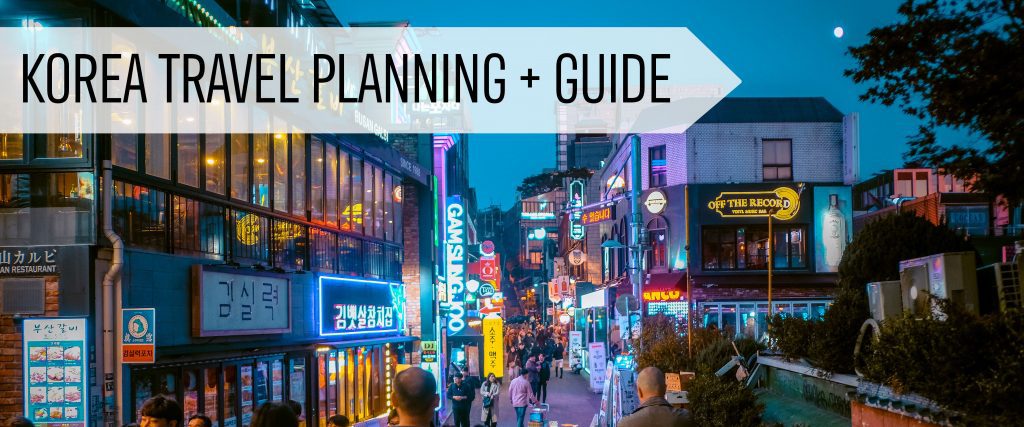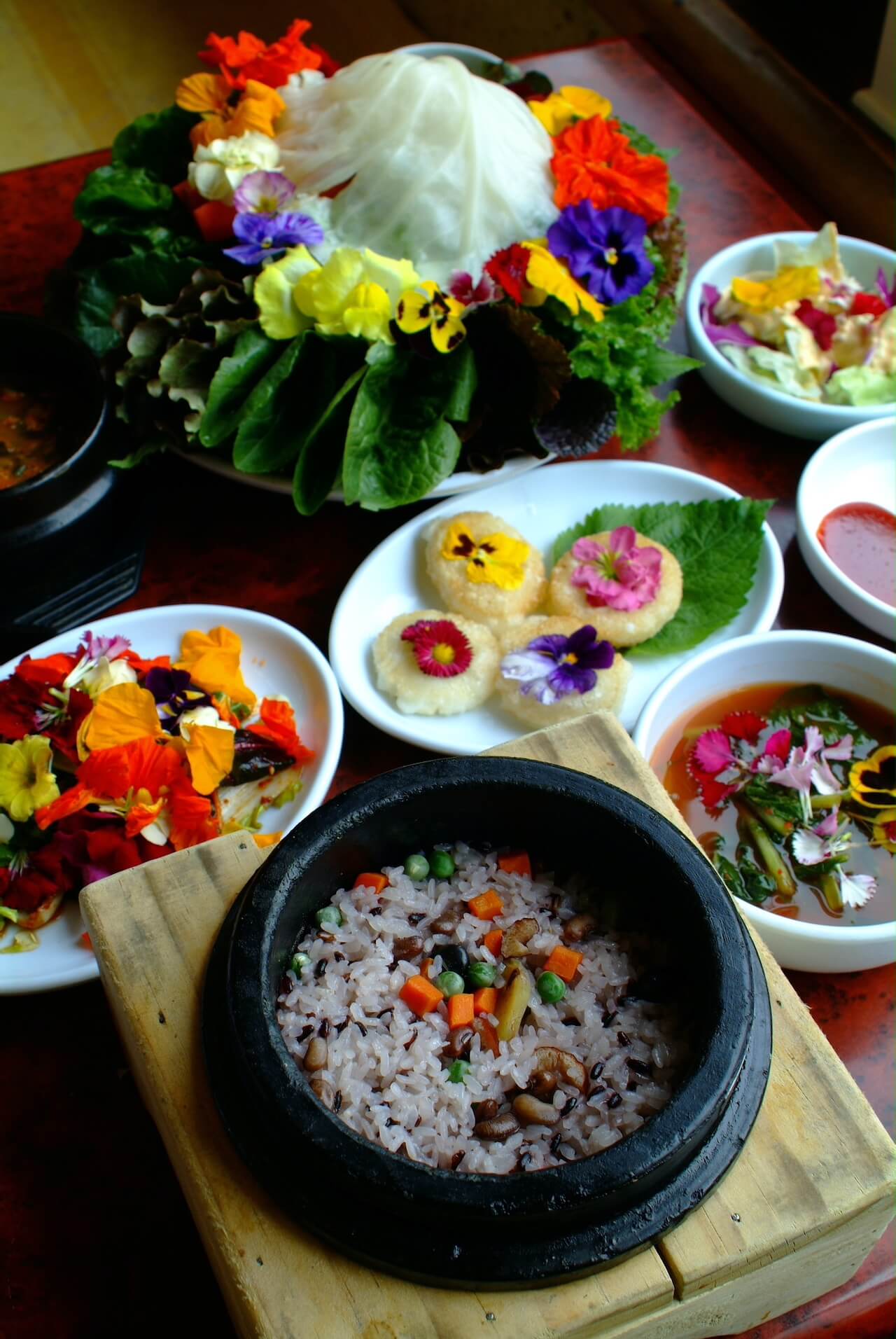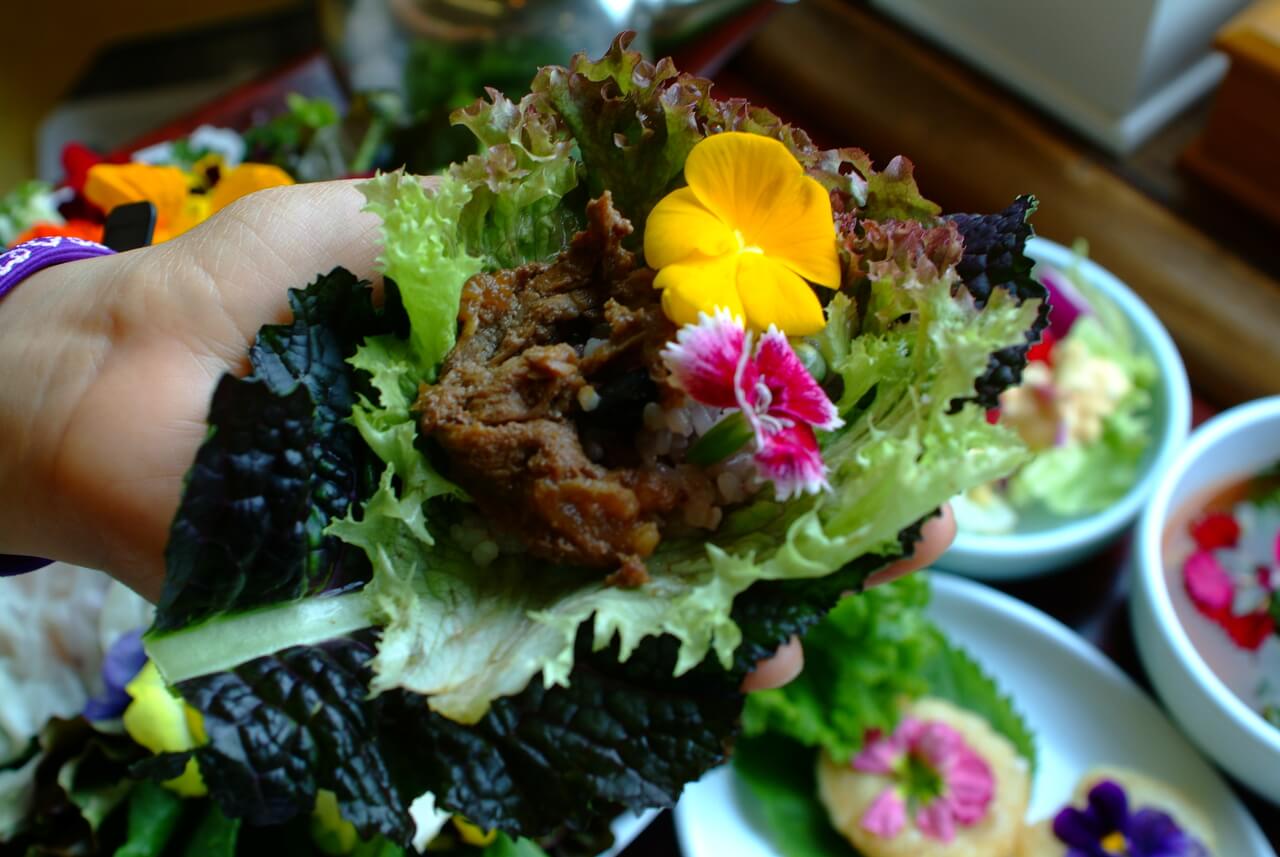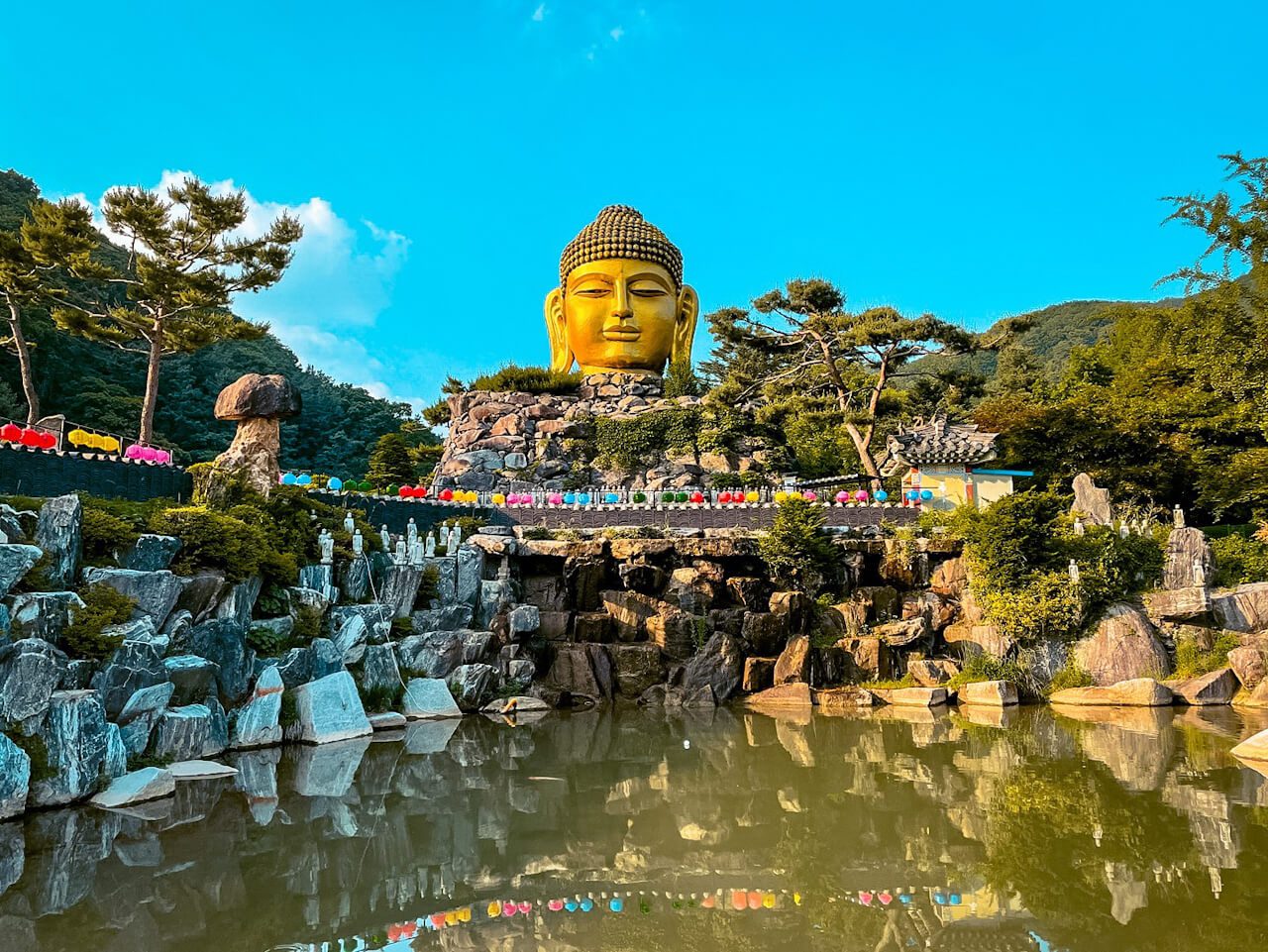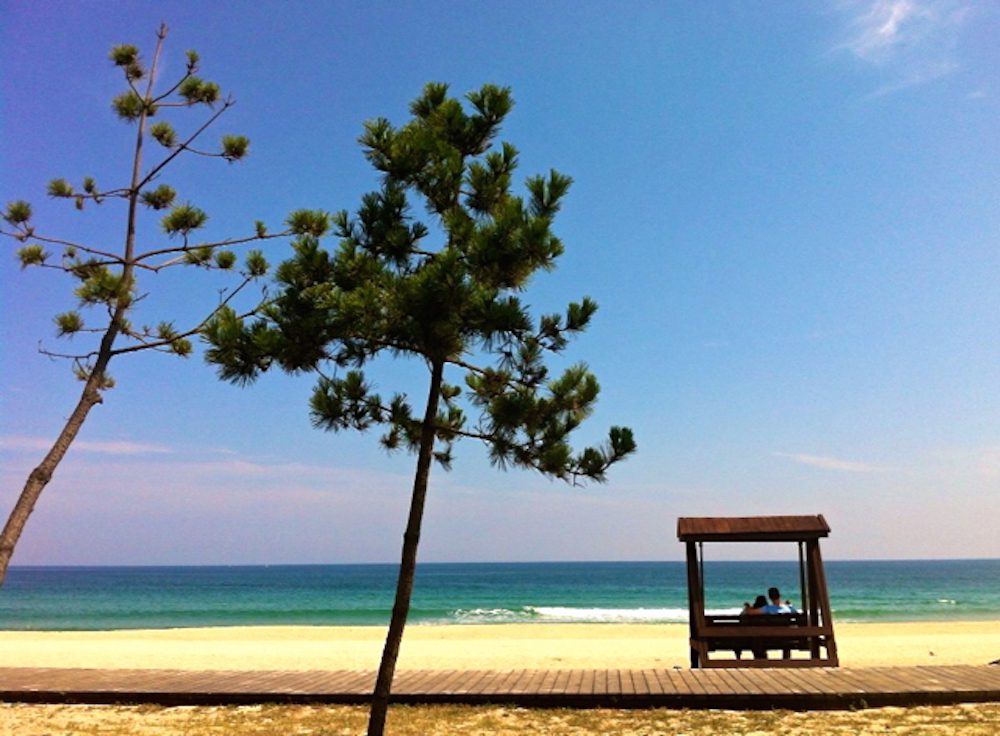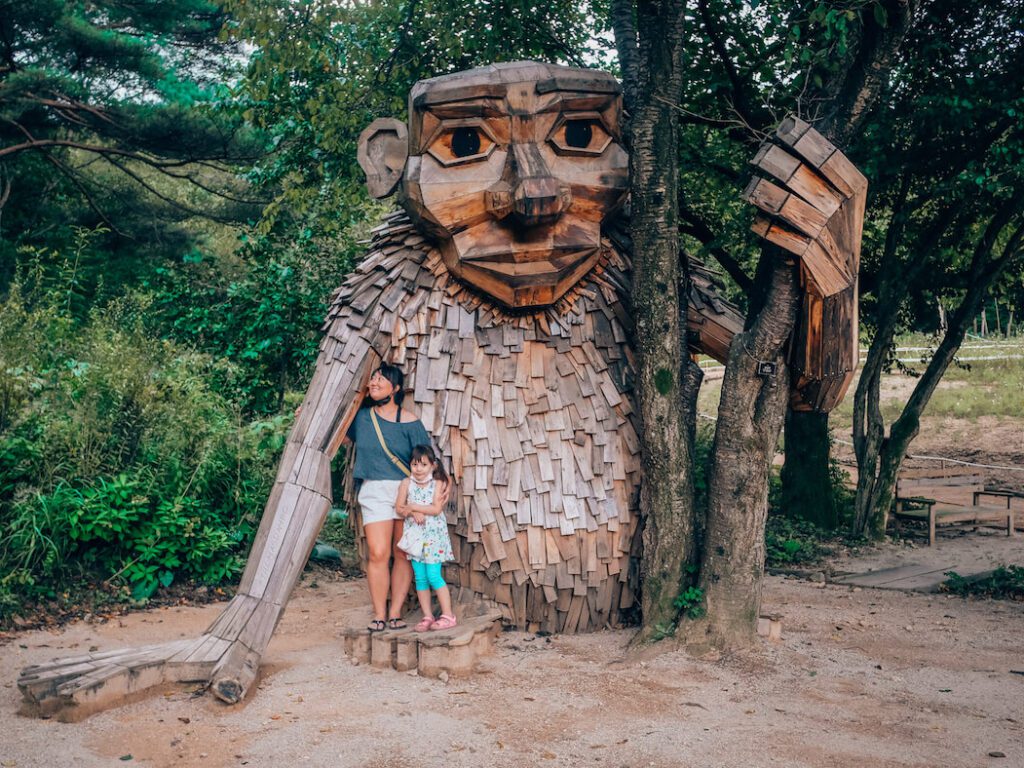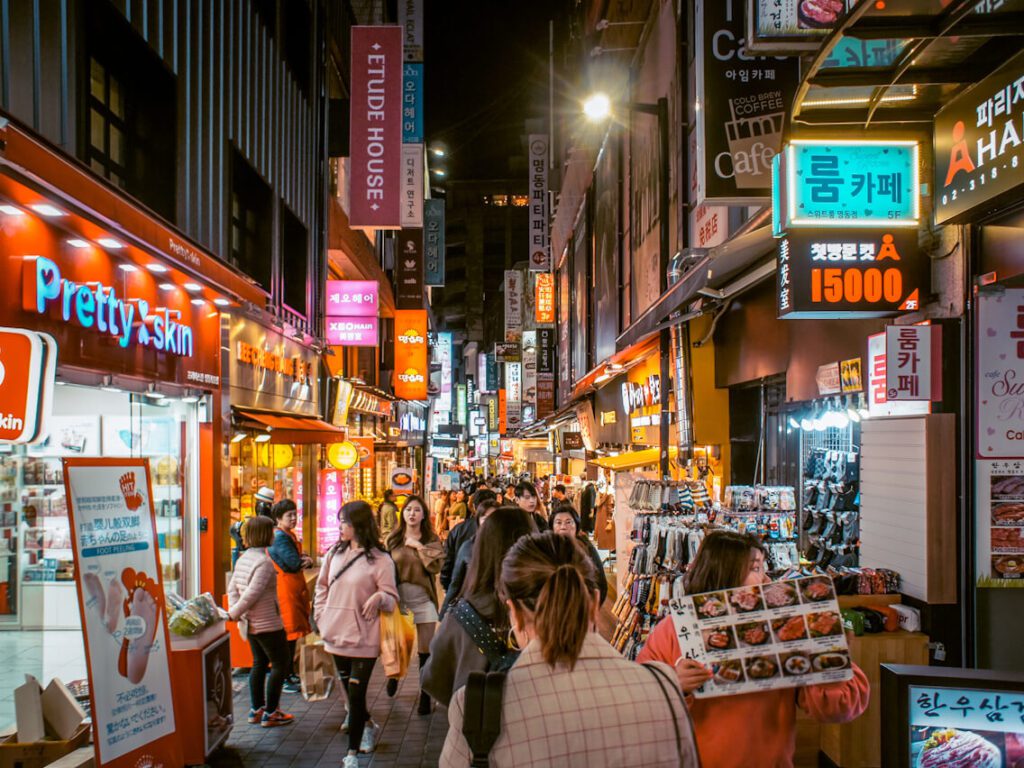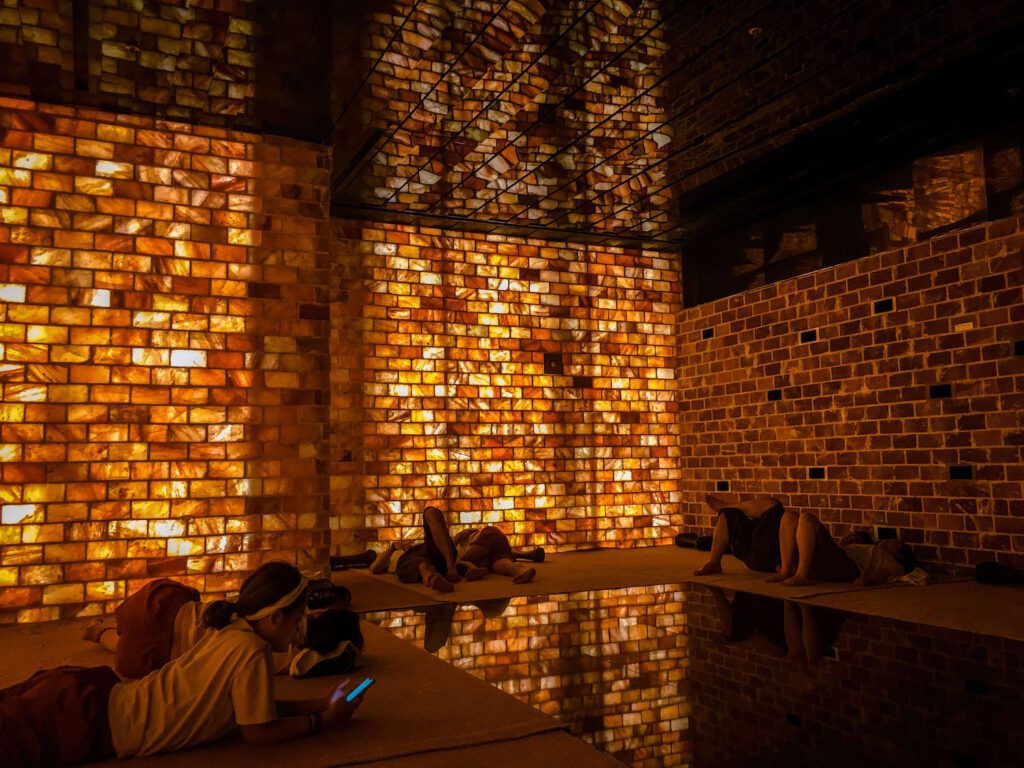Gongju Travel Guide | 11 Glorious Things to do in this Gem of the Baekje Kingdom
Gongju in South Korea will surprise you. With 3 separate UNESCO World Heritage sites, a Joseon Dynasty utopian temple, and a vibrant festival schedule – I just know you’ll love discovering this glorious gem of the Baekje Kingdom as much as I did.
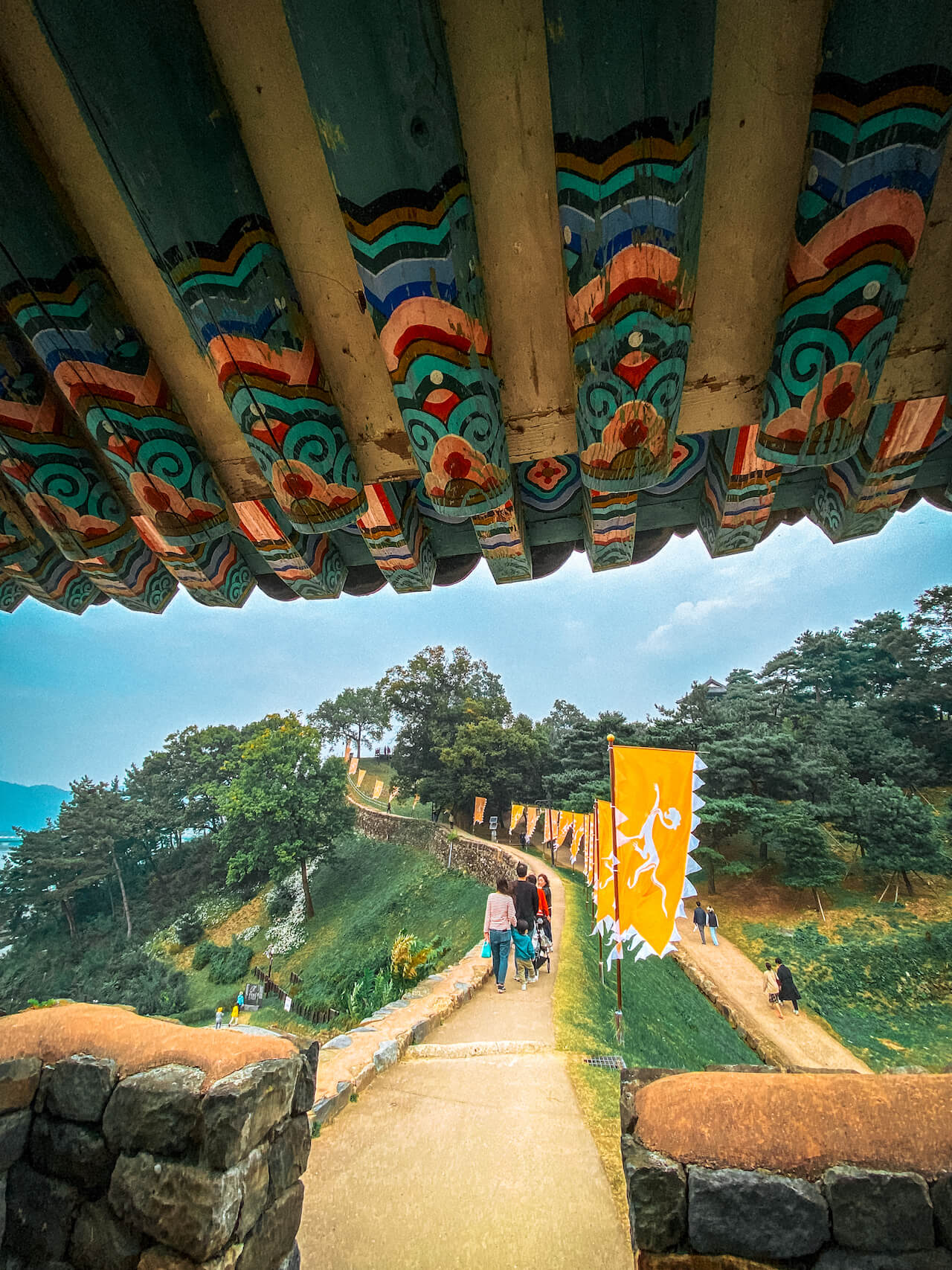
Gongju is a hidden gem destination you’ll love exploring.
This former capital of the Ungjin Empire is a real hidden gem destination in Chungcheongnam-do, that’s absolutely packed with worthwhile cultural and historical experiences. Don’t miss it!
*Any purchases made through affiliate links here help run this site. Support my blog here.
In this guide
What to Expect in Gongju
Gongju is a small city with a population of around 110,000 people. This is a seriously under-touristed destination in Korea that really should get a lot more attention.
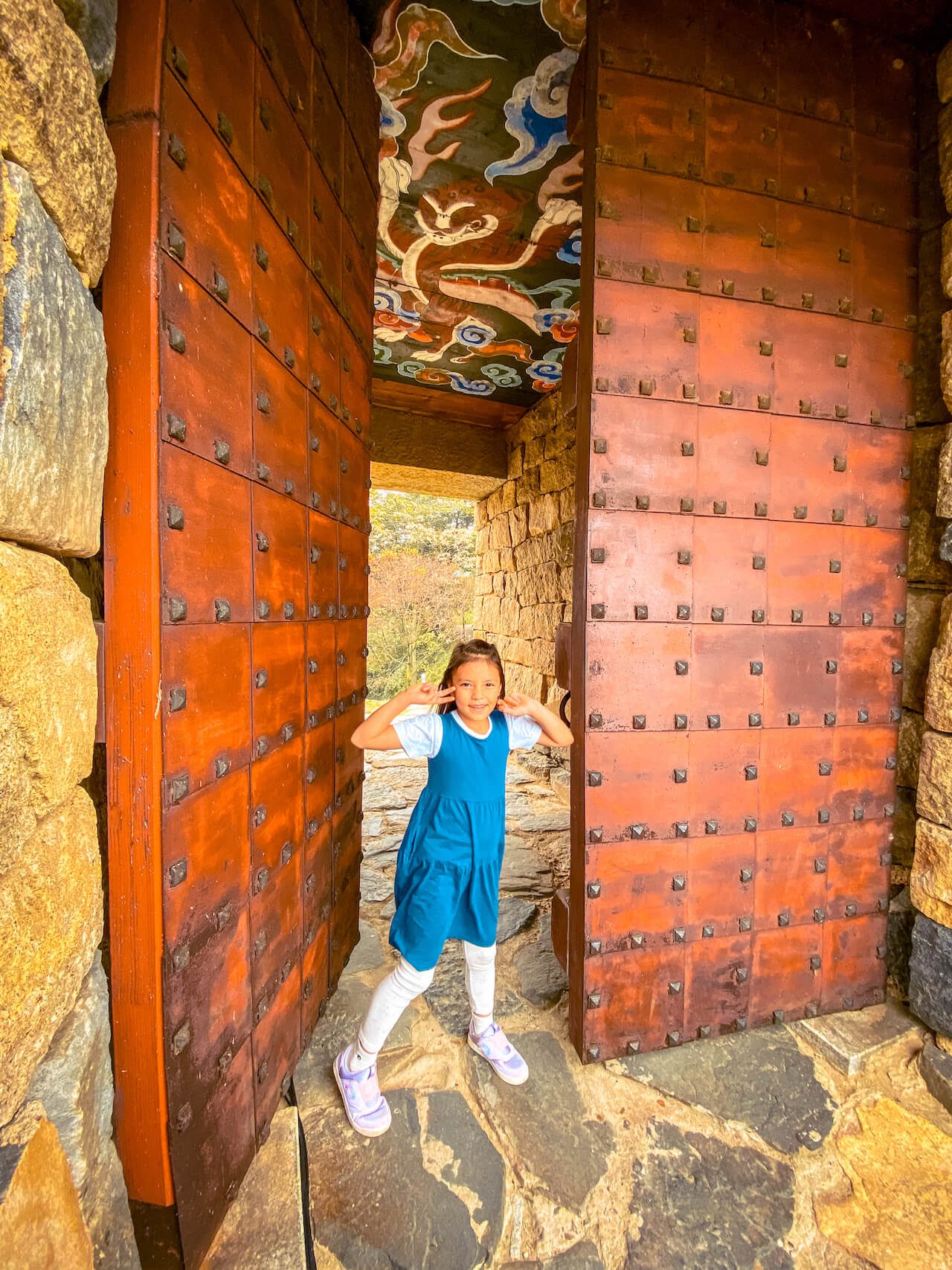
There are many worthwhile things to see in Gongju.
It’s easy to reach Gongju City from Seoul, quickly and affordably, using public transit. And the compact size of the city makes it the perfect place to navigate easily, with worthwhile attractions just a hop, skip, and a jump away from each other.
Many are walking distance, and there’s so much to see, you could easily spend a weekend there without getting bored.
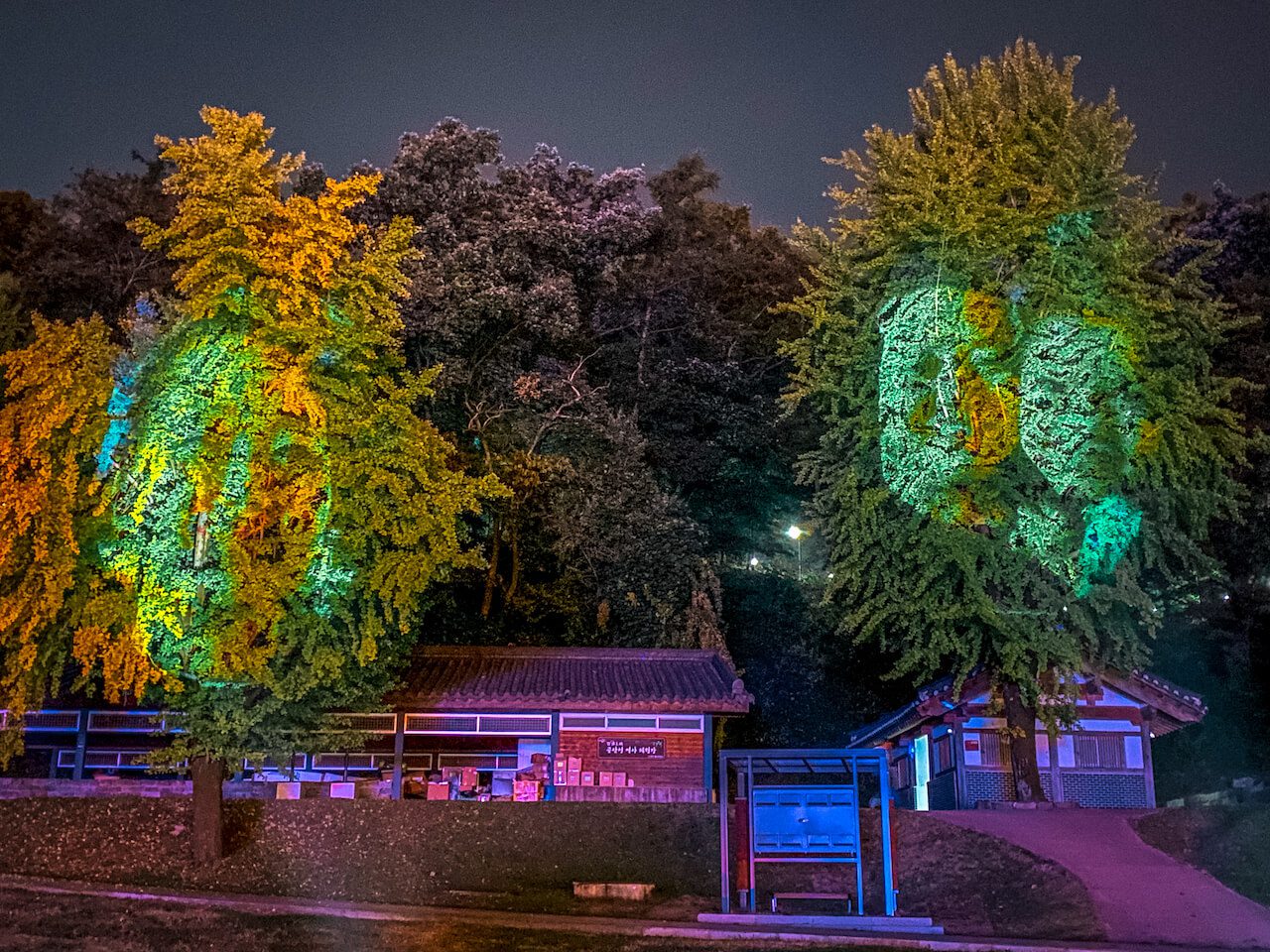
I loved both my visits to Gongju (even when they projected my face onto a tree).
You’ll likely be one of very few foreign tourists visiting the city, but that’s what makes it great. It’s like a visit to the real Korea, far away from hanbok rentals and packed tourist attractions geared specifically to international travelers.
Trust me – you will not regret a trip to super-relaxed, and culturally-rich Gongju in South Korea.
How to Get from Seoul to Gongju
Gongju is about 140-km south of Seoul in Chungcheongnam-do Province. There are several ways to get between the 2 cities.
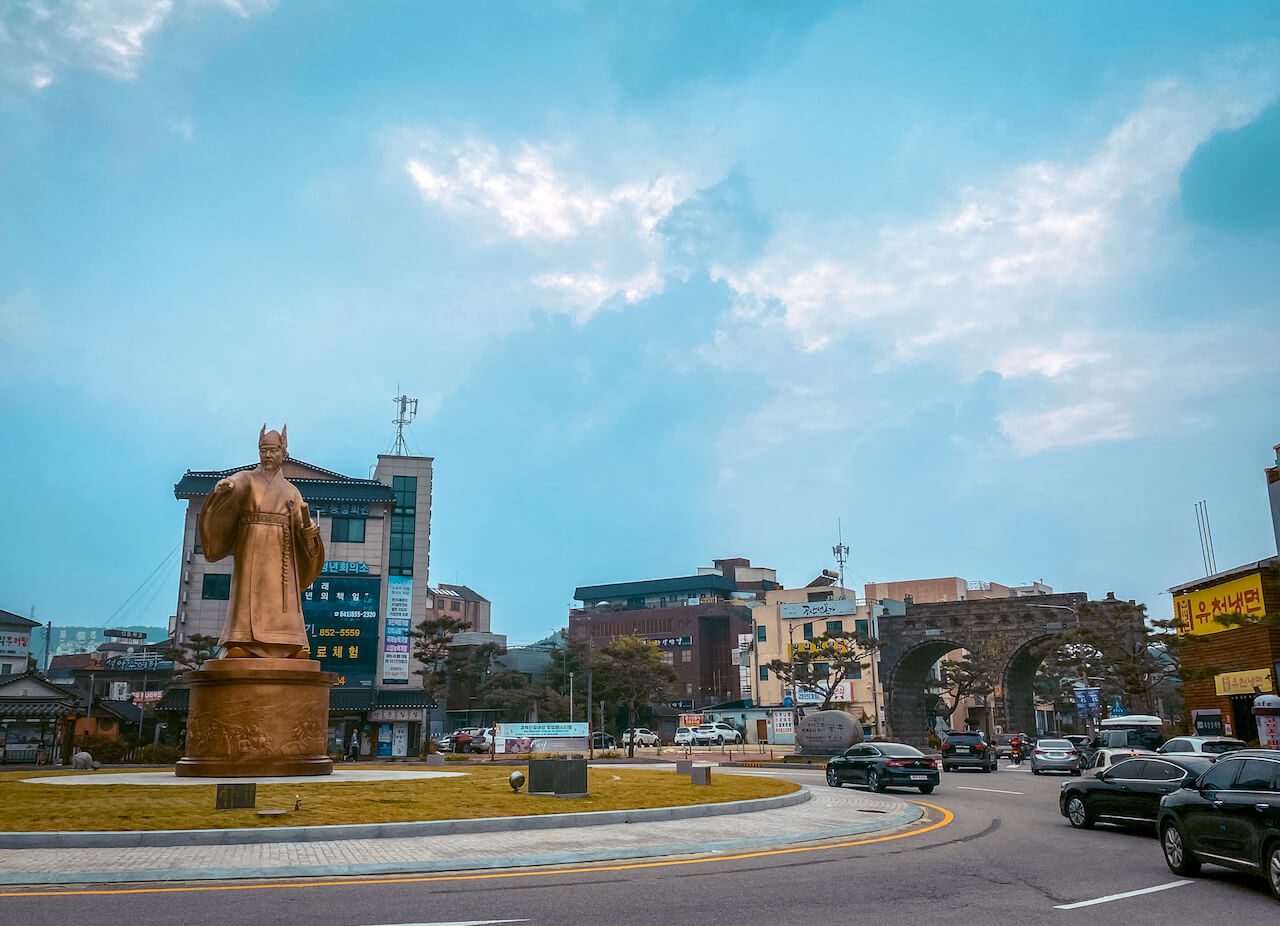
Gongju is in South Chungcheong Province, about 140-km south of Seoul.
By Car | Driving is undoubtedly one of the best ways to get to Gongju from Seoul. I’d budget 2 -3 hours to get there, including stops at rest areas for snacks and bathroom breaks. If you don’t have your own car, it’s worth comparing the cost of public transit vs renting a car, to see what’s most convenient and affordable.
By Bus | If you don’t have a car, an express bus is your best option for getting there. It’s fastest to catch a bus from Seoul Express Bus Terminal. Your final destination is Gongju Bus Terminal.
A round-trip bus ticket costs around 20,000 won. With perfect traffic conditions, it takes approximately 90 minutes to reach Gongju from Seoul. Keep in mind, that you’ll still have to get from the Bus Terminal to wherever you want to start your explorations.
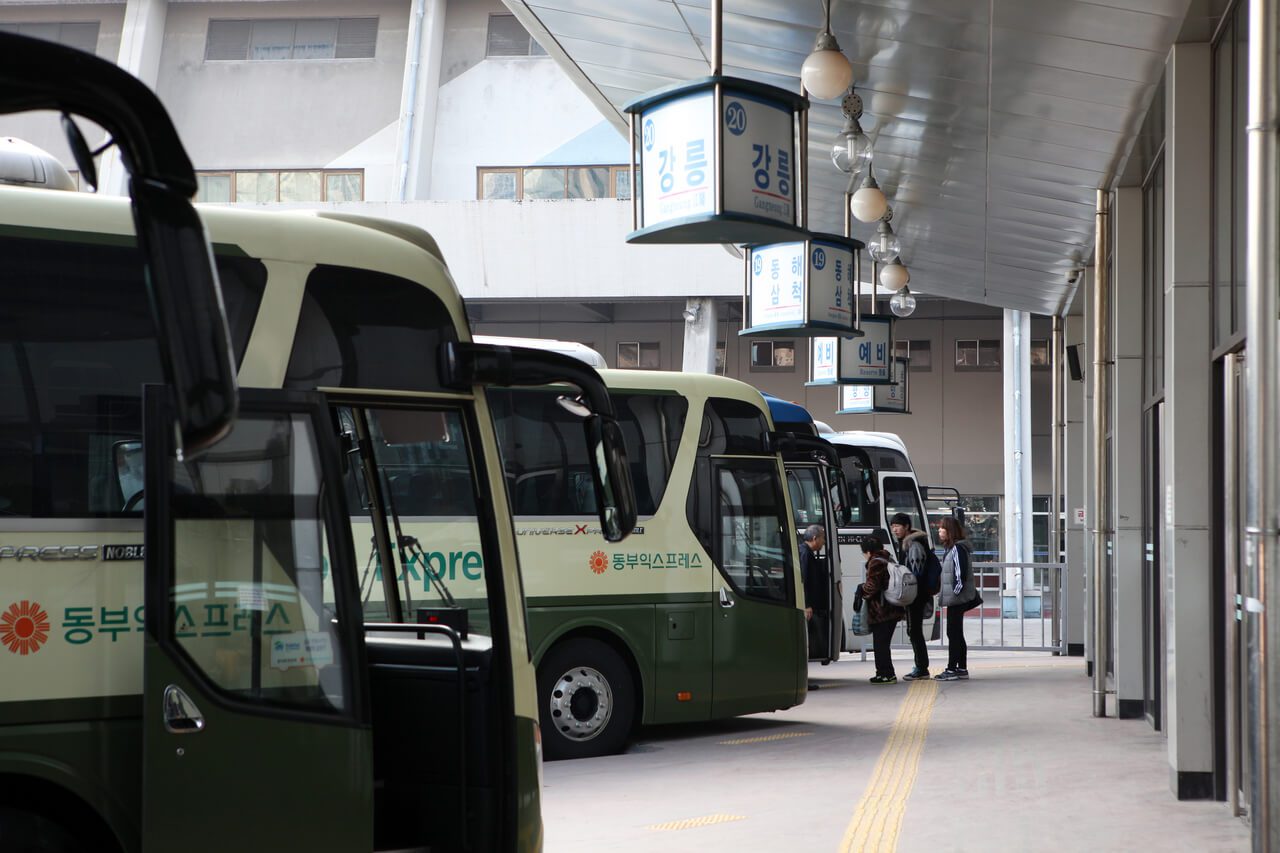
Express bus is the best option if you don’t have a car © Kim Jiho, Korea Tourism Organization
By Train | If you’re addicted to train travel, it’s also possible to get to the city using the KTX high speed rail. The KTX departs from Yongsan Station, and arrives at Gongju Station in 70 minutes. A one-way ticket costs 25,100 won.
Gongju Hotels | Where to Stay
Gongju is the ideal place to try a hanok stay, because they have some of the most affordable rates I’ve seen across Korea.
If you don’t want to stay in the Hanok Village, there’s a cluster of hotels near Gongsanseong Fortress that are ideal for a short stay. This area is super-convenient, because it’s close to tourist sites like the Seongsan-ri Tombs, and the National Museum.
Gongju Haruhanok Guesthouse
If you read all the excellent reviews for Gongju Haruhanok Guesthouse, you’ll notice they’re mostly in Korean. It’s testament to just how under-touristed Gongju is by international travelers, but also a check in the win column for this lovely pension, near Gongsanseong Fortress.
Because really, if a Korean doesn’t know a quality hanok stay when they see one, who does? 😉
Gongju Moonlight Garden
Sparkling clean, cozy, and warm, Gongju Moonlight Garden Guesthouse is another excellent option near Gongsanseong Fortress. It has all the traditional Korean vibes you could want, including ondol floors, and lovely local hosts.
Gongju Honghuiguan Guesthouse
Gongju Honghuiguan Guesthouse has a super convenient location right across the street from Gongsanseong Fortress. Restaurants and cafes are minutes from the guesthouse, and it’s also happens to be one of the most affordable hanok stays in the whole city!
Planning a trip to Korea?
Connect with other travellers | Ask and get answers to all your travel questions | Learn about all the best things to do in Korea | Join our Korea Travel Planning + Guide Facebook Group now.
South Korea Travel Essentials
Travel Visas
Travel requirements, visas, and passport photos for a trip to South Korea
Hotels and Other Accommodation
Wifi, SIM Cards, and Portable Wifi
4G unlimited data SIM card | Portable and Pocket 4G WiFi
Airport Transfers and Luggage Delivery
AREX Incheon Airport Express Train
K Airport Limousine Bus from Incheon Airport
Incheon Airport to Seoul Private Transfers
Gimhae Airport to Busan Private Airport Transfers
Car Rentals (International Drivers Permit required)
Luggage Delivery To / From Hotel or Airport
Money-Saving Transit and Transport Passes
Visit Busan Pass with FREE admission to 31 attractions + 77 discounted
Wowpass, Prepaid Debit Card for Cashless Payment in Korea (includes T-money Card)
Hop-on Hop-off Bus Tours
Seoul City Hop-on Hop-off Tour Bus Day | Seoul Night View Course
Daegu Hop-on Hop-off Tour Bus Tour
Day Tours and Discounted Admission Tickets
Get Your Guide | Klook | Trazy | Viator
Things to do in Gongu
I was pleasantly surprised by just how much there is to do in Gongju. You can get a lot accomplished on a day trip, but I recommend staying for at least a night (and maybe two), so you can fully experience this gem of the Baekje Dynasty.
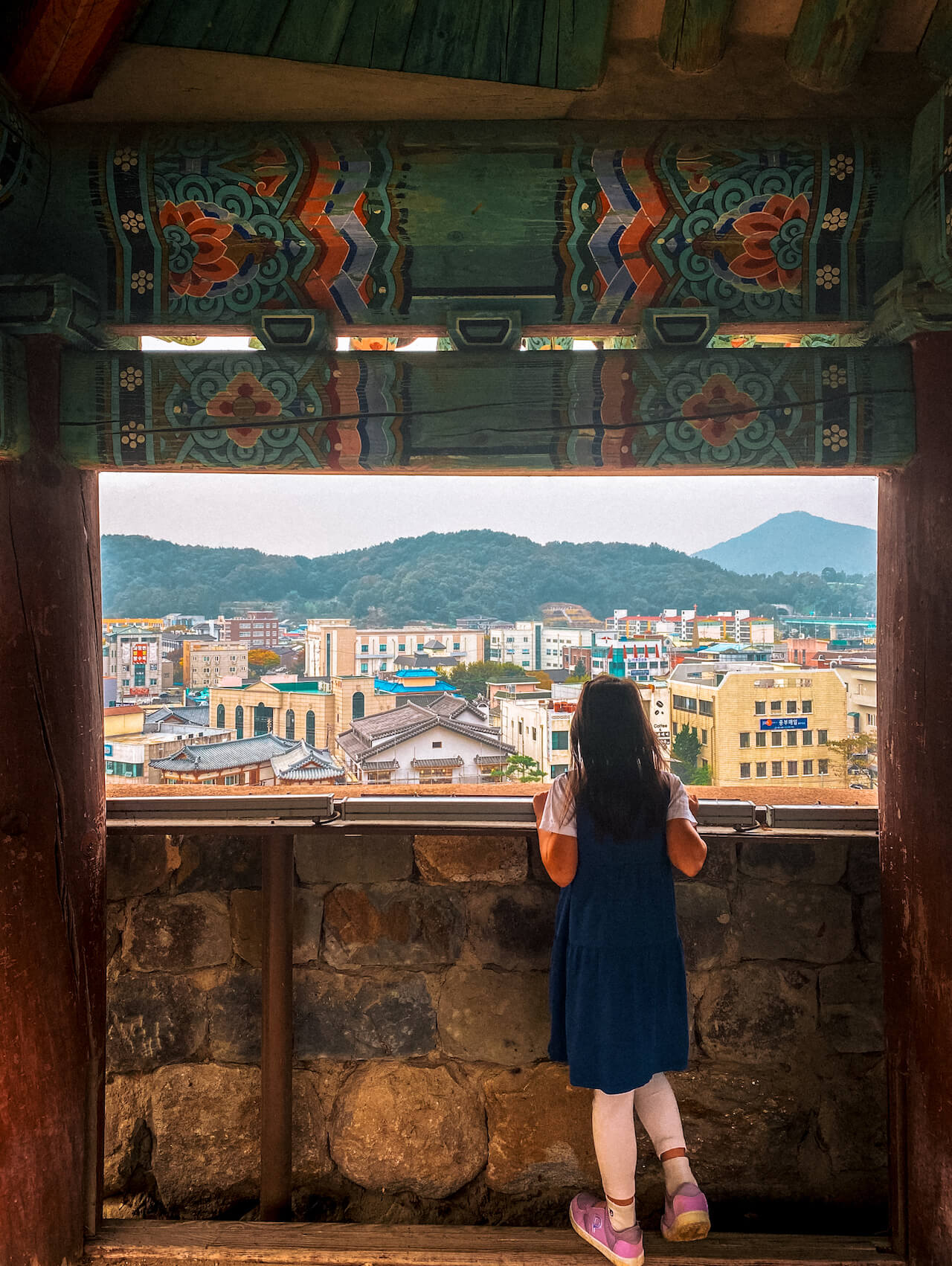
There’s enough things to do in Gongju for a 3 day trip.
I’ve actually been to Gongju twice, because I didn’t get everything I wanted to see and do accomplished on a single trip. This small city is worth your time, and I for one, plan on visiting again.
Gongju Gongsanseong Fortress | 공주 공산성
Address: 280 Ungjin-ro, Gongju-si, Chungcheongnam-do | 충청남도 공주시 웅진로 280 (금성동)
Gongsanseong Fortress is one of Gongju’s 3 UNESCO World Heritage sites. Established during the Baekje Period, this mountainous fortification sits 110-metres above sea level, and has a fortress wall measuring 2.6-km in length.
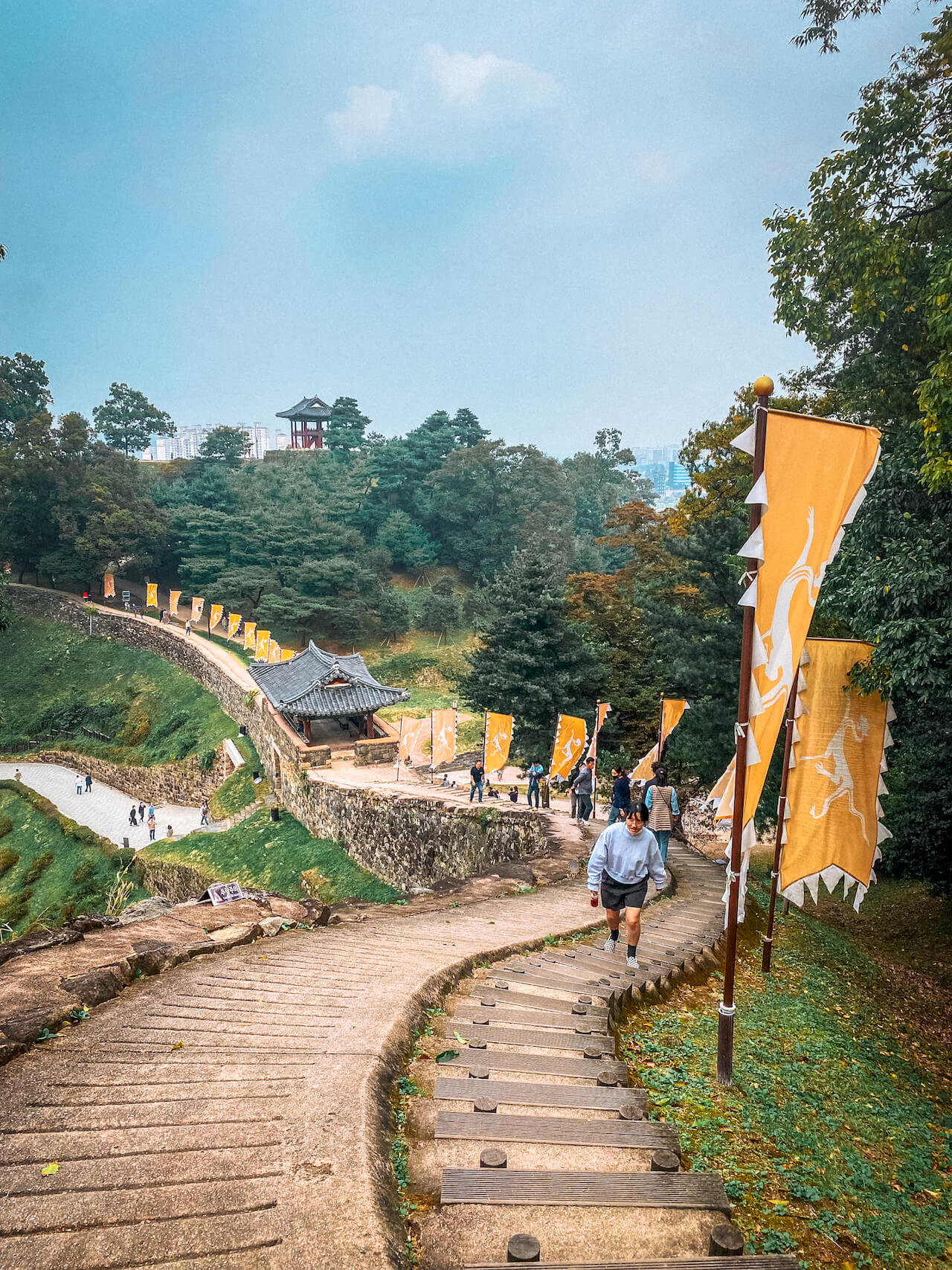
Gongsanseong is a treasure of the Baekje Dynasty.
Built during the Ungjin period, from 475~538, Gongsanseong is a treasure of the Baekje Dynasty, with huge historical and cultural significance. Stroll along the fortress walls, explore the royal palace site, and enjoy views of the Geumgang River and Gongju City laid out below you.
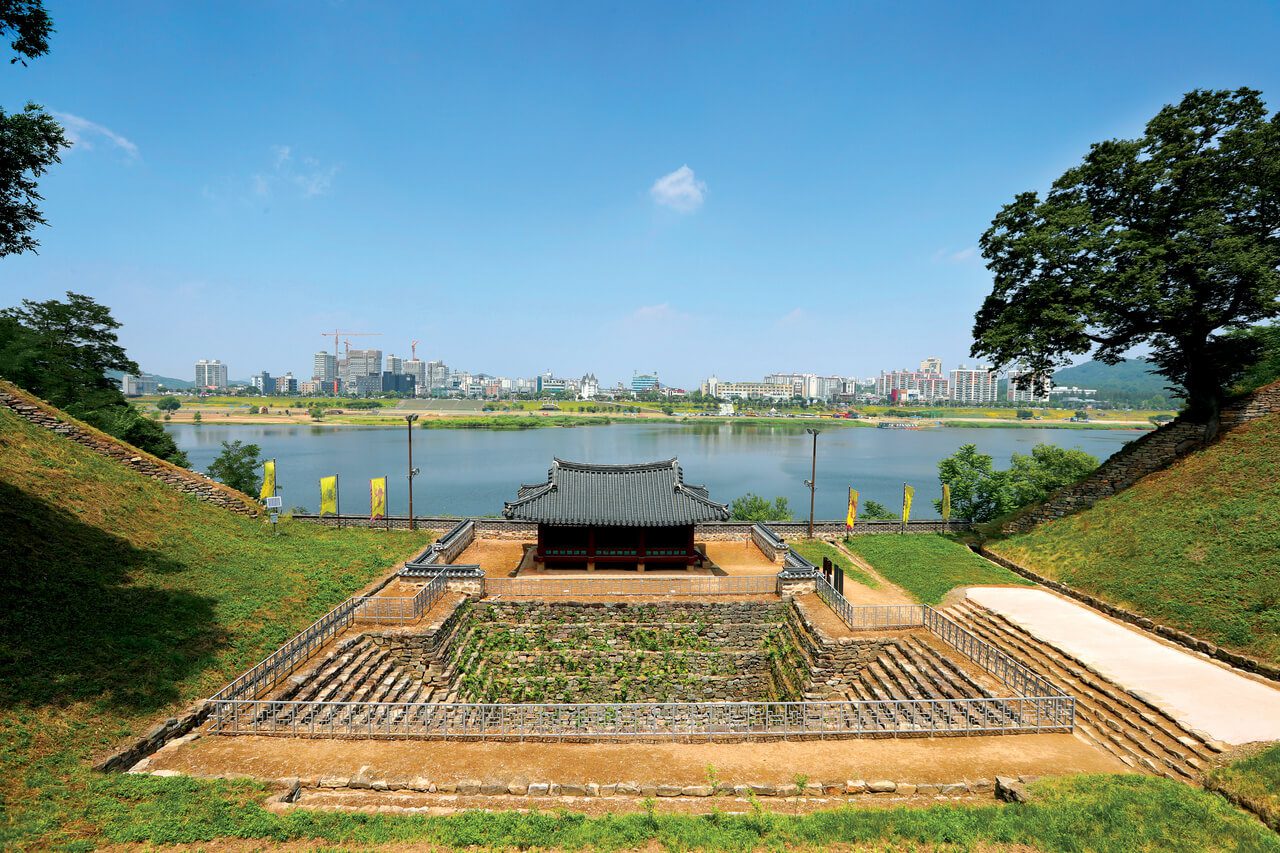
Gongsanseong Fortress is UNESCO World Heritage © Lee Bumsu, Korea Tourism Organization
Don’t miss the changing of the guards ceremony, which happens at Gongsanseong Fortress in April, May, September, and November, every hour, from 11AM to 4PM (except noon).
SUWON HWASEONG FORTRESS + KOREAN FOLK VILLAGE | Hwaseong is a UNESCO listed Joseon Era fortress, located in Suwon. See this architectural marvel, and immerse yourself in Korean culture at the Korean folk village on a easy day tour from Seoul. Check full details here.
Magoksa Temple | 마곡사
Address: 966, Magoksa-ro, Gongju-si, Chungcheongnam-do | 충청남도 공주시 사곡면 마곡사로 966 (사곡면)
Built in the 9th Century, Magoksa Temple is the 2nd of Gongu City’s UNESCO World Heritage sites. Located on Taehwasan Mountain, this temple was selected as one of the Joseon Dynasty’s 10 utopian sites, due to the shape of its geographic terrain, which forms an auspicious “taeguk” design.
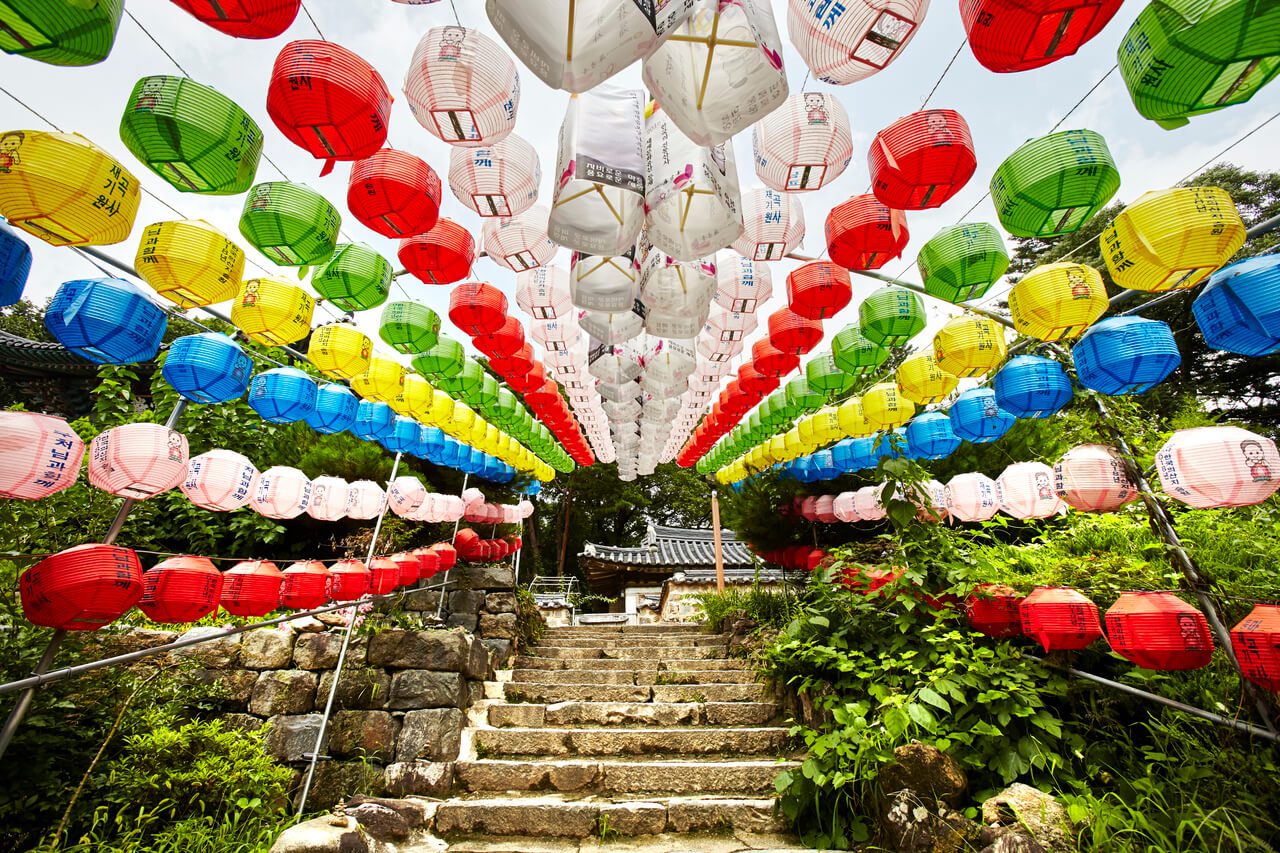
Magoksa was selected as one of the Joseon Dynasty’s 10 utopian sites © Kim Jiho, Korea Tourism Organization
This meant that Magoksa was considered a sanctuary safe from war and disaster, and many important cultural artifacts were kept and displayed at the temple. Interestingly, Magoksa was never damaged by any major wars, including the Imjin War and the Korean War.
Look out for Magoksa’s prayer halls, which are set on 2 different levels, Daegwangbojeon (the main hall), a 14th Century, 5-story stone pagoda with a unique Tibetan-style top, and a juniper tree that was planted after Korea’s liberation from Japanese colonial rule, in 1946.
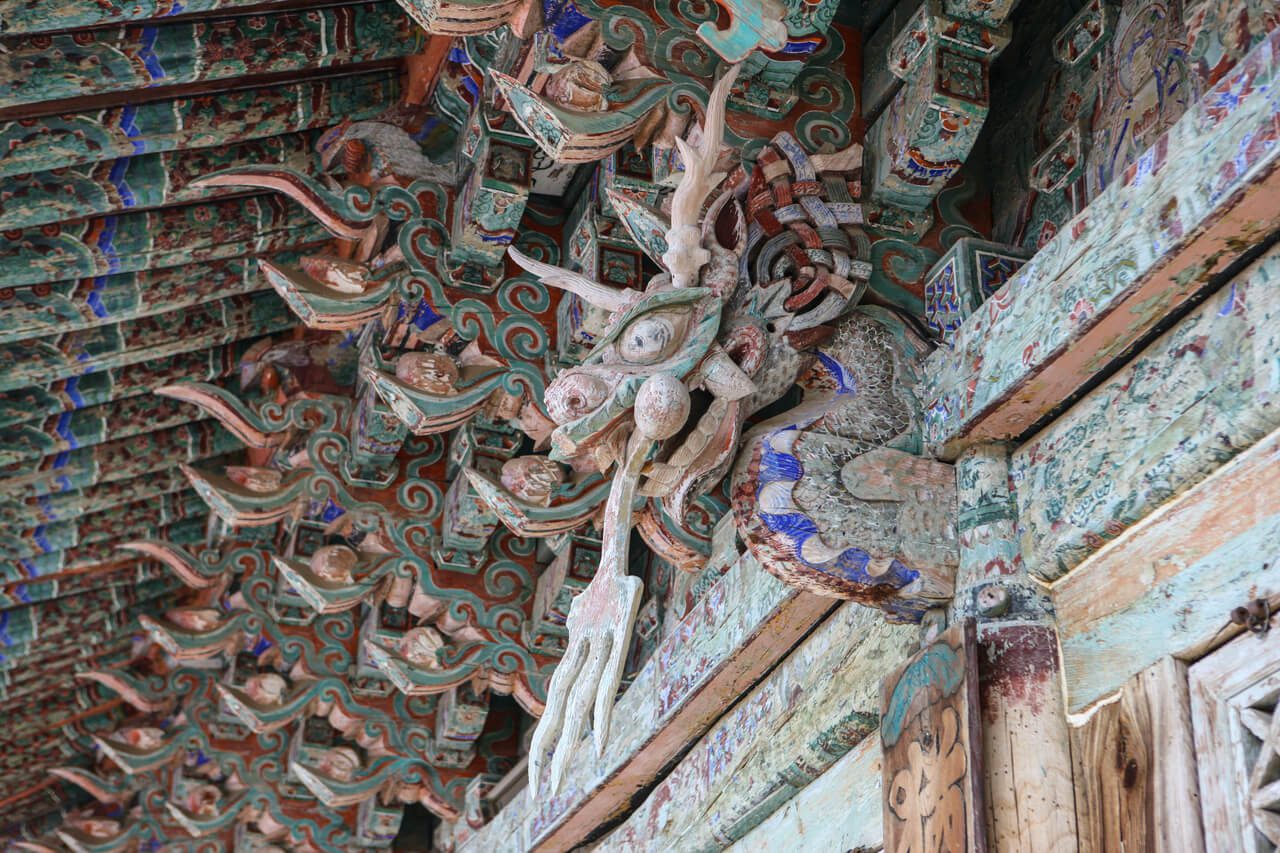
Gorgeously faded away © Kim Jiho, Korea Tourism Organization
Gongju Songsan-ri Tombs & Royal Tomb of King Muryeong | 공주 송산리 고분군과 무령왕릉
Address: 37-2 Wangreung-ro, Gongju-si, Chungcheongnam-do | 충청남도 공주시 왕릉로 37-2 (웅진동)
As the 3rd UNESCO World Heritage site in Gongju, the Songsan-ri Tombs and Royal Tomb of King Muryeong are an important historical treasure, reflecting Baekje culture and history.
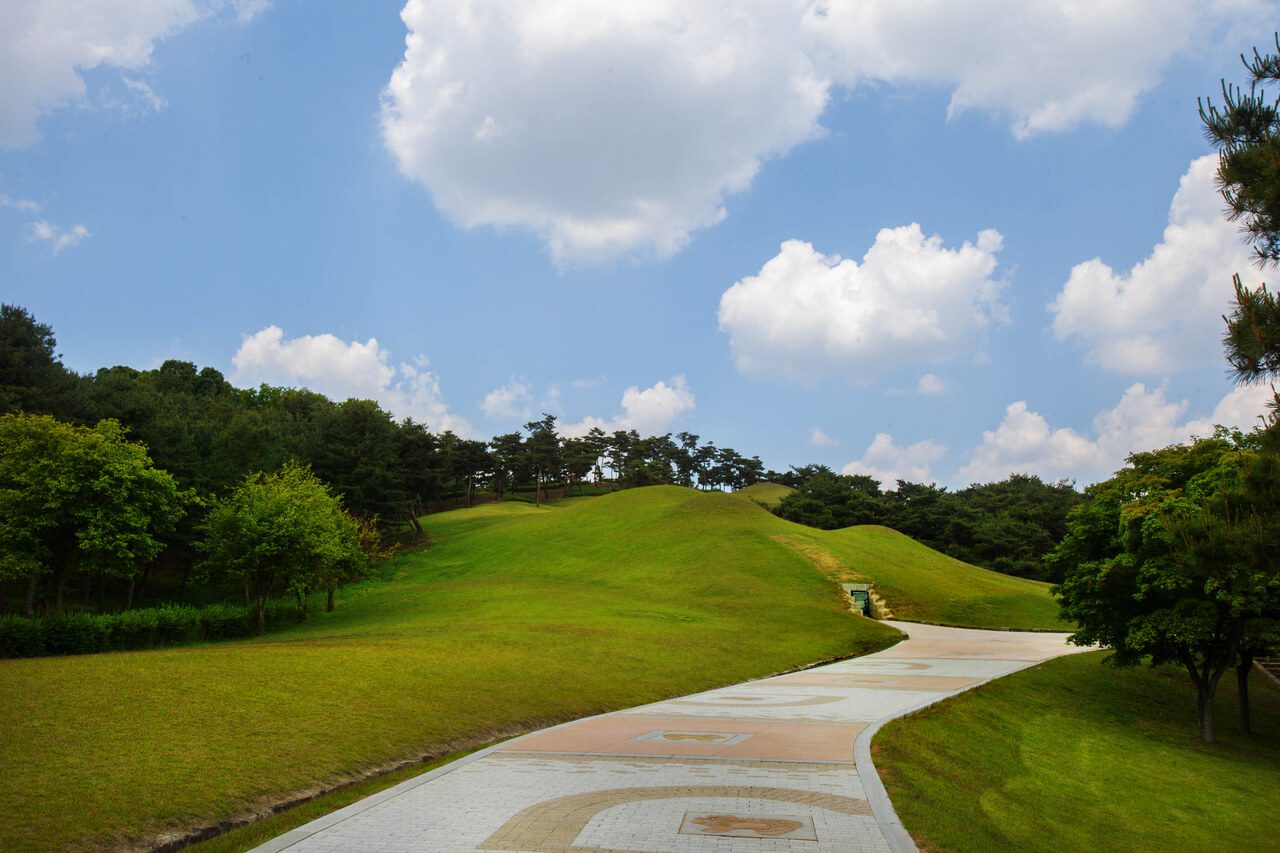
7 tombs have been unearthed at Songsan-Ri © Kim Jiho, Korea Tourism Organization
It’s thought that Songsan-ri contains the graves of 17 kings from when Gongju was the capital of the Baekje Kingdom, however only 7 of these have been unearthed so far. Among them are the royal tombs of King Muryeong and his queen, who reigned from 501 to 523 CE.
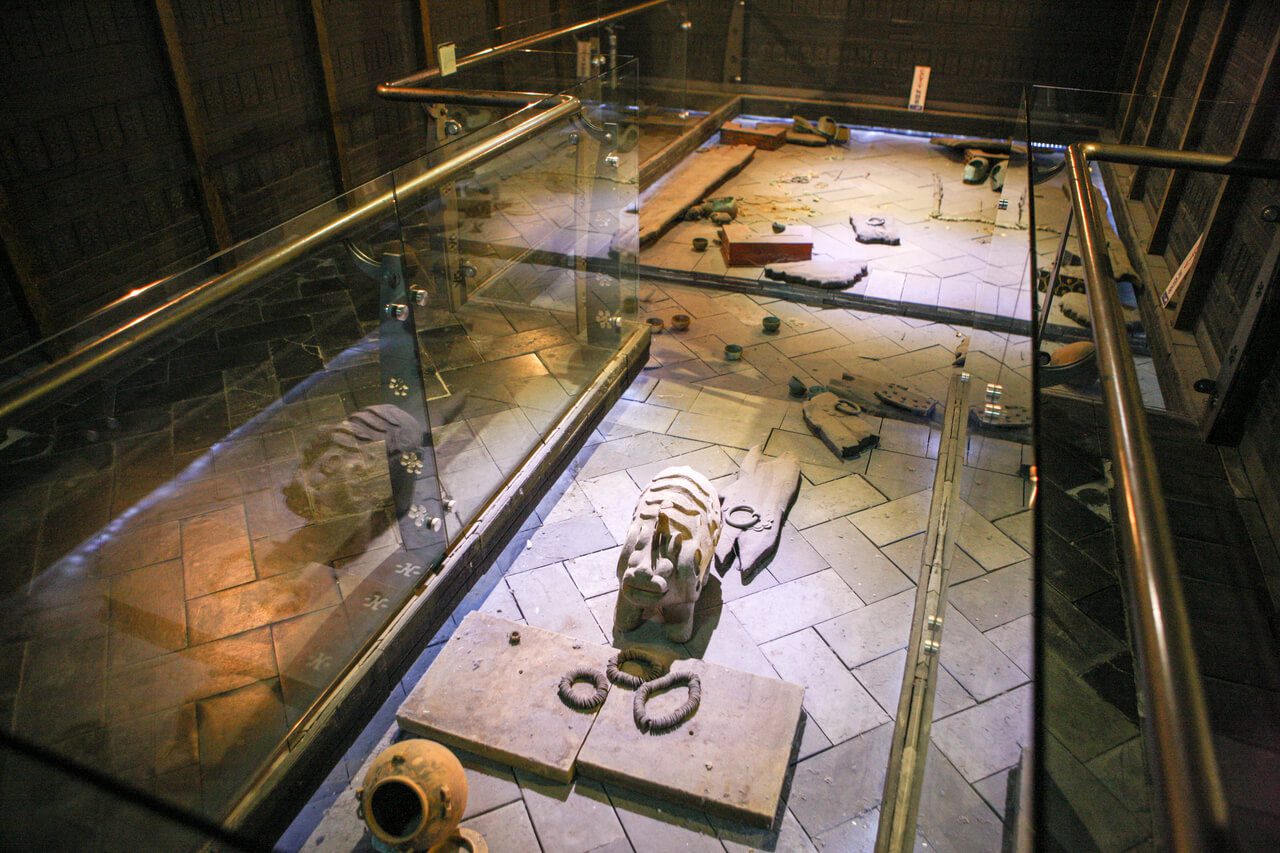
Over 4,600 Baekju artifacts were found in the Royal Tombs © Kim Jiho, Korea Tourism Organization
King Muryeong is considered one of the most important kings of the dynasty, allied with Silla, and instrumental in forging regional relationships with Japan and China. His royal tomb contained over 4,600 historical artifacts from the Baekje Era – twelve of which were eventually designated as national treasures.
UNESCO WORLD HERITAGE SIGHTS IN GYEONGJU | Daereungwon in Gyeongju is a large, ancient tomb complex featuring the burial mounds of numerous Silla kings and nobles. See it, as well as tranquil Bulguksa Temple, stunning Donggung & Wolji at Anapji Pond, and Hwangridan-gil on this awesome day tour from Busan. Check full details here.
Gongju National Museum | 국립공주박물관
Address: 34 Gwangwangdanji-gil, Gongju-si, Chungcheongnam-do | 충청남도 공주시 관광단지길 34 (웅진동)
As the present-day location of Ungjin, which was the former capital city of the Baekje Kingdom, the free Gongju National Museum preserves and celebrates the history and culture of the Ungjin Baekje Period.
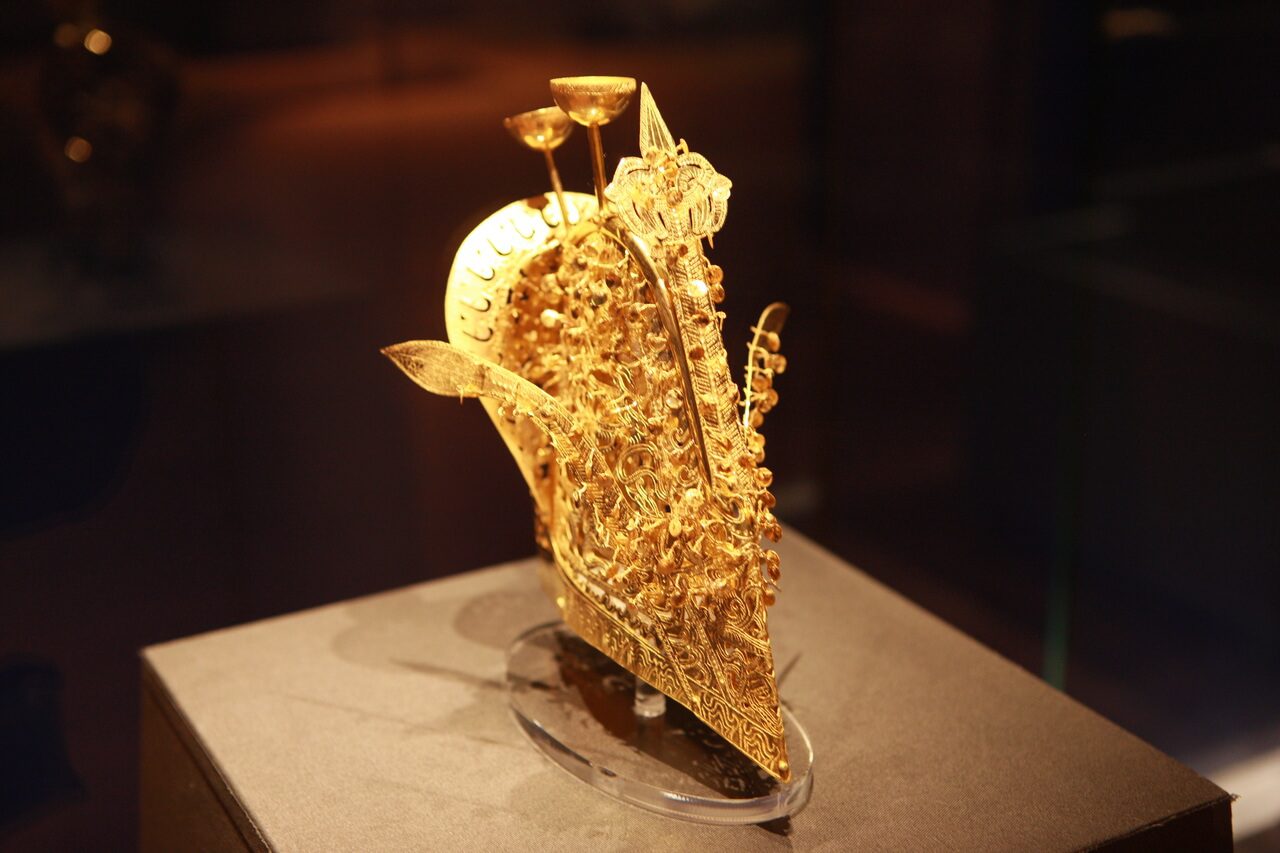
Gongju National Museum celebrates Baekje culture © Kim Jiho, Korea Tourism Organization
On the 1st floor is Ungjin Baekje Hall. This space is dedicated to artifacts excavated from the royal tombs of King Muryeong, and his Queen. There were 4,600 artifacts, of 108 different types found in these tombs, including stone epitaphs, gold ornaments, accessories, and the King’s sword.
On the 2nd floor, is the Chungcheongnam-do History and Culture Hall. This exhibition displays pieces from the period when Ungjin was the capital of the Baekje Kingdom from 475-538 CE.
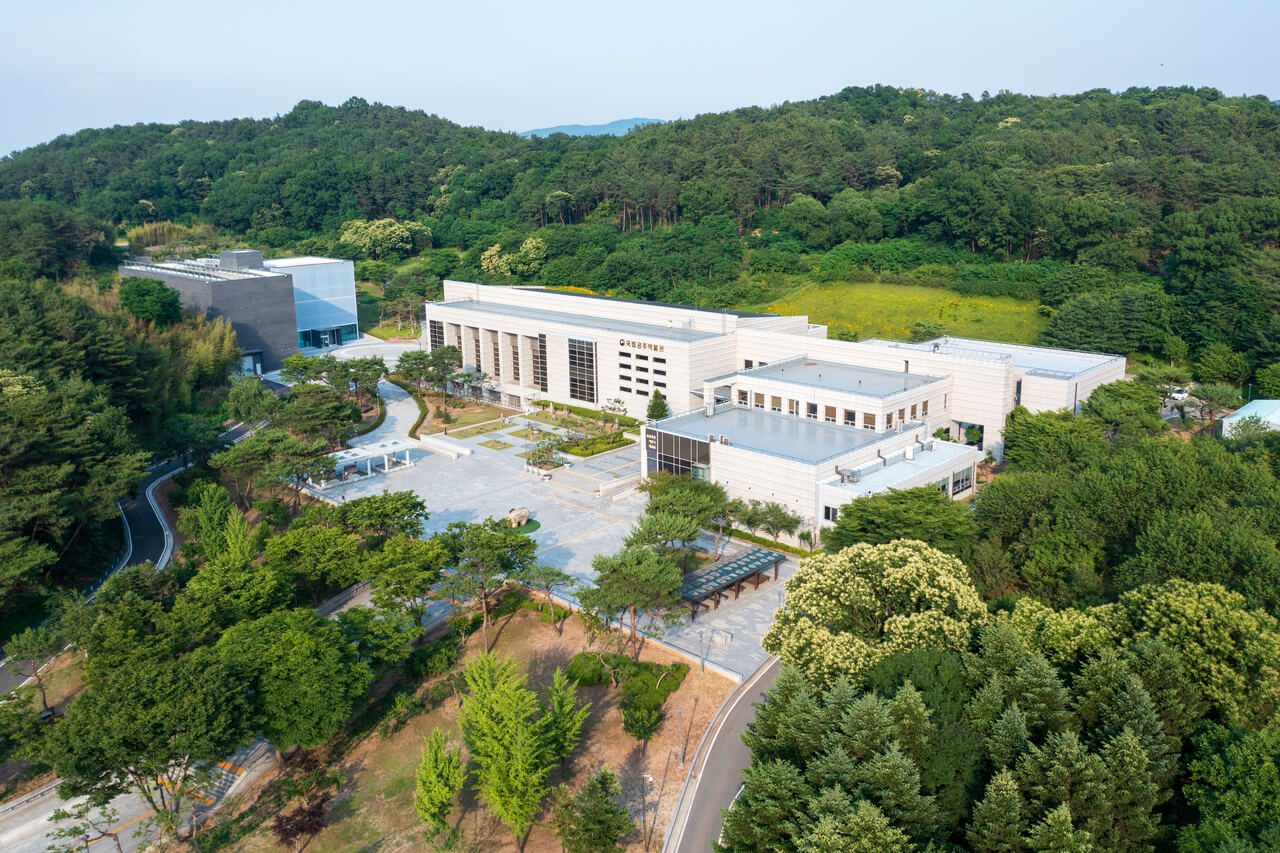
© Kim Jiho, Korea Tourism Organization
There’s also an outdoor sculpture area, and a section of the museum dedicated to children that’s interactive and fun. Get full details on their website.
HANOK STAY | Ondol floors! Hanji paper doors! Want to sleep in a traditional hanok, but can’t make it to Gongju? Check out these hanok stays in Seoul instead. Check options here.
Gongju Hanok Village | 공주한옥마을
Address:12, Gwangwangdanji-gil, Gongju-si, Chungcheongnam-do | 충청남도 공주시 관광단지길 12
Located between the Royal Tomb of King Muryeong and the National Museum, the Gongju Hanok Village is unique in Korea. (Tip: It’s possible to walk between all 3 of these sites)

Traditional rooftops at Gongju Hanok Village.
While there are several hanok villages around the country, this one was built specifically with the intention of allowing visitors easy access to traditional hanok style housing, and cultural experiences, without any of the potential awkwardness with local residents.
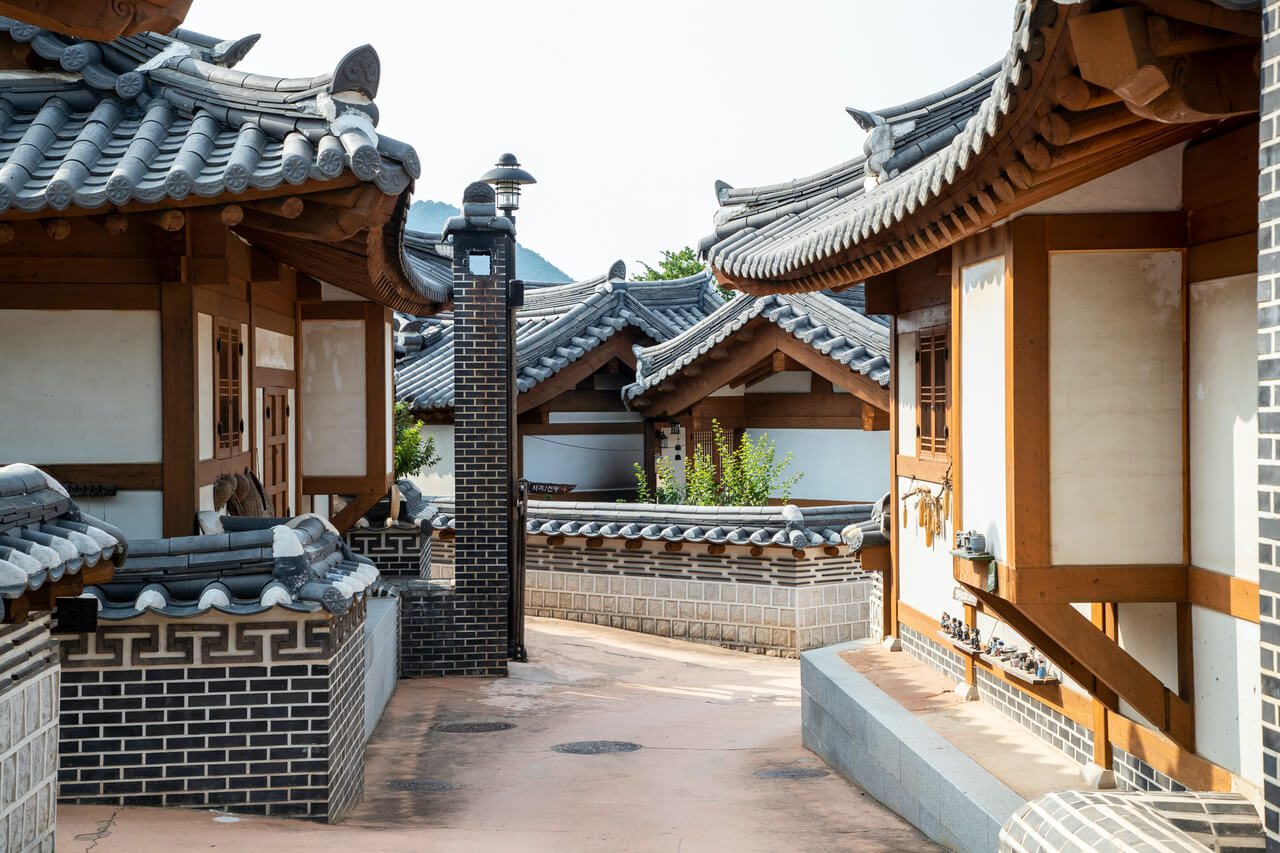
Gongju Hanok Village is purpose-built © Lee Bumsu, Korea Tourism Organization
It was constructed for the Great Baekje World Festival in 2010, and offers hanok stay opportunities at a reasonable price. There are both group and individual accommodations built on the 31,310-square-metre land, as well as additional facilities, including auto camping, outdoor kitchens, and a seminar room.
The Gongju Hanok Village also offers experience programs that provide insight into the Baekje Dynasty. Check their website for details on what’s available.
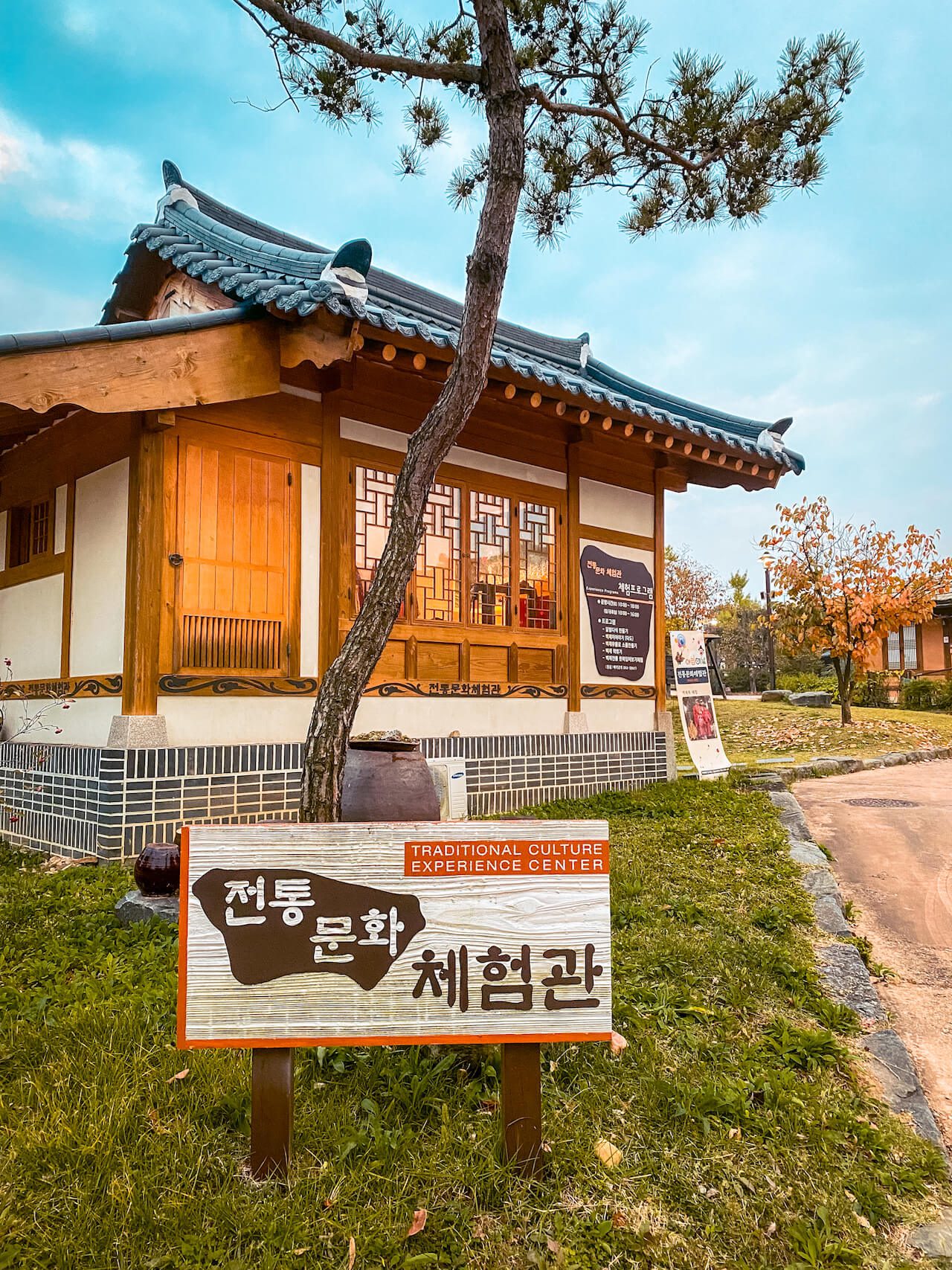
Cultural experiences are available inside Gongju Hanok Village.
There’s also a gorgeous lotus paddy to check out in summer, children’s playground, and a free foot bath, near the entrance of the hanok village. Be sure to find it, and give your feet a good soak (just be sure to wash your feet before entering the water). It’s totally revitalizing!
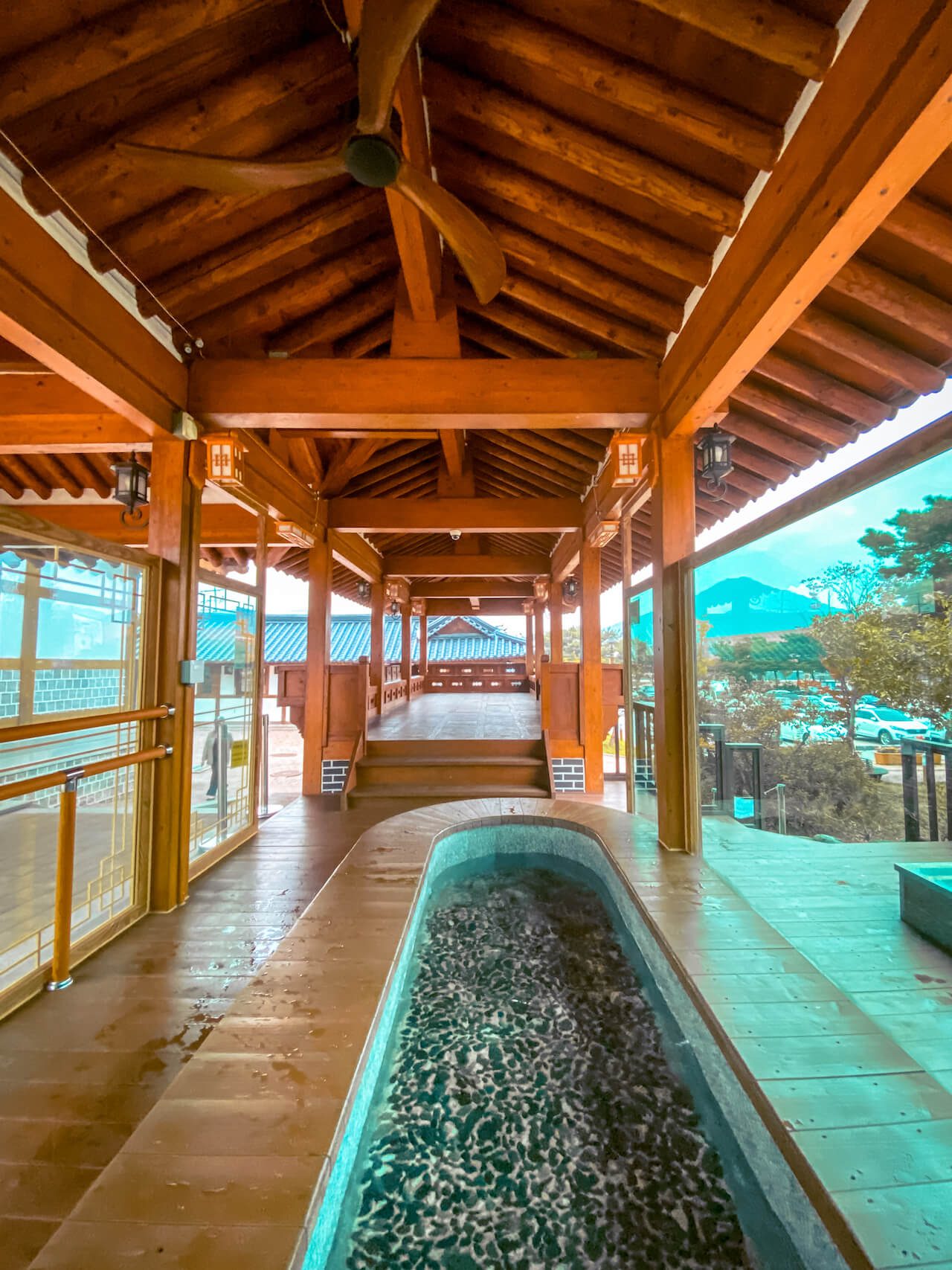
Relax your feet in this free foot bath at Gongju Hanok Village.
HANDMADE STAMP ENGRAVING EXPERIENCE | Carve your name and create your own South Korean style dojang or seal for the ultimate souvenir, at this DIY experience in the traditional Insadong area. Check details here.
Yugu Mural Village | 유구벽화마을
Address: 257-5 Seongnam-ri, Yugu-eub, Gongju-si, Chungcheongnam-do | 충청남도 공주시 유구읍 성남리 257-5

Pretty pink walls in Gongju’s Yugu Mural Village
Yugu Mural Village is an off-the beaten path destination, in a city that’s already pretty under-touristed. Head there to learn about the history of Gongju’s local textile industry, which began way back in the Joseon Dynasty, with handloom fabric-making.
The creation of artwork for the Yugu Mural Village began in 2014, and now you can enjoy some gorgeous images of Yugu Market, local pine trees, textile-based murals, and large-scale mosaic-tiled pieces.

Large-scale mosaic tile artwork in Gongju’s Yugu Mural Village.
All were designed with the intention of revitalizing the area, and bringing happiness and prosperity to a mostly defunct industry. I personally loved walking down the street, and checking out all the gorgeous textile-based murals.
It’s easy to feel the character of the local citizens and artisans who must’ve worked so diligently in this field, until its unfortunate demise.

I was really touched by the life in this gorgeous mural.
Yeonmisan Nature Art Park | 연미산자연미술공원
Address: 98 Yeonmisangogae-gil, Useong-myeon, Gongju-si, Chungcheongnam-do | 충청남도 공주시 우성면 연미산고개길 98
The Yeonmisan Nature Art Park is one of the main venues for the Geumgang Nature Art Biennale in Gongju. While the Biennale only takes place once every 2 years, you can visit Yeonmisan Nature Art Park anytime, and see amazing things.

“Shelter in the Forest” by Kim-Do-hyun was first created for the 2018 Geumgang Biennale.
It’s worth going to Yeonmisan, because art pieces from past biennales remain in the art park, to “undergo changes over time.” They’re only replaced or removed, when nature decides it’s time for them to be let go… what a lovely concept.
Yeonmisan Nature Art Park is open from 10AM to 6PM, CLOSED on Mondays. I can’t wait to go back!
Festivals in Gongju
It seems like Korea has more festivals than any other country in the world – and Gongju continues that tradition with several stellar events over the course of the year.
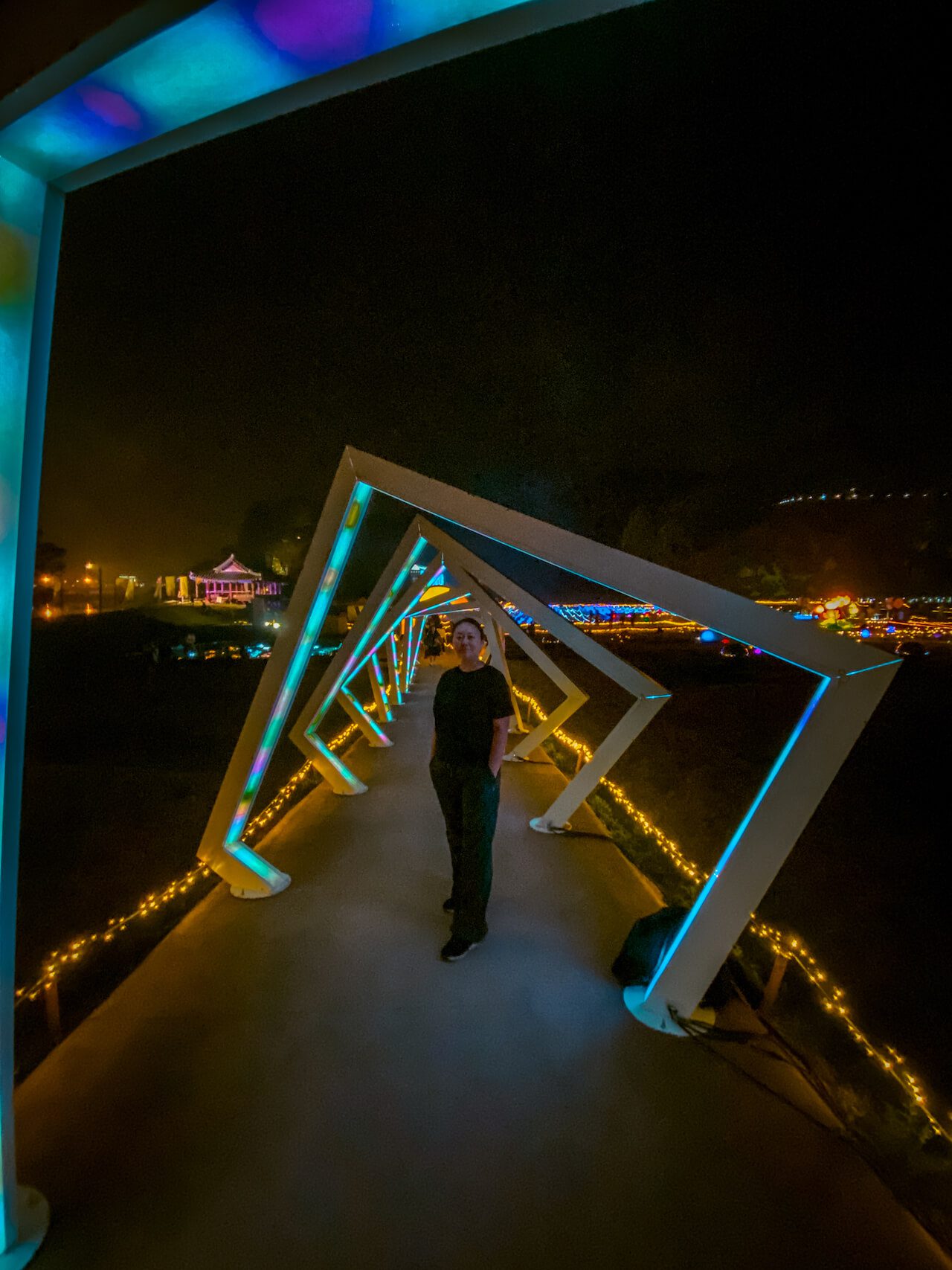
There are festivals galore in Gongju, Korea.
I’ll highlight a few of the major Gongju festivals, but do your own search and you’ll find many more.
JEONJU HANOK VILLAGE + BUYEO LOTUS FESTIVAL | Marvel at 800 traditional hanok homes in Jeonju, and the sight of tens of thousands of stunning red lotus flowers in full bloom in Buyeo (another former capital of the Baekje Kingdom). Check full details here.
Geumgang Nature Art Biennale | 금강자연미술비엔날레
Address: 98 Yeonmisangogae-gil, Useong-myeon, Gongju-si, Chungcheongnam-do | 충청남도 공주시 우성면 연미산고개길 98
The Geumgang Nature Art Biennale is an incredible international art exhibition that takes place outdoors. so that the “lifecycle of the artworks created and installed in the park (are) constantly changed by the effects of nature and the passage of time.”

The Pine Bear by Ko Yohan is a permanent exhibition from the Geumgang Nature Art Biennale.
Supervised by Yatoo, the Korean Nature Artists’ Association, the Geumgang Nature Art Biennale sees artists from all over the world live together and collaborate to create artworks over the course of 3 weeks.
These are mainly displayed at Yeonmisan Nature Art Park in Gongju, where visitors are encouraged to discover and interact with the many remarkable artworks on-site.
It’s a new kind of art, where the impact of nature is as much a part of the artwork, as the piece itself, and I personally loved it! Check their website for upcoming biennale dates and events.

Interacting with the artworks is the best part!
TRAVELING WITH A GROUP? | See the best of former Baekje capitals Gongju and Buyeo, with a private van tour for up to 7 people. Check full details here.
Gongju Roasted Chestnut Festival | 겨울공주 군밤축제
Festival Dates: January 26th – 28th, 2024
Address: 347 Ungjin-dong, Gongju-si, Chungcheongnam-do | 충청남도 공주시 웅진동347
The Gongju Roasted Chestnut Festival is the perfect place to spend a family day out. Try your hand at roasting these sweet winter treats atop an open fire, sample various chestnut flavoured foods and drinks, or pick up some local chestnuts at a discounted price.
FUN FACT: Gongju City is responsible for over 17% of the 6,530 tons of chestnuts produced in Korea every year.
Check their website for full details (Korean only).
SEASONAL LOCAL FESTIVALS TOUR | Going to a festival in Korea is one of the best ways to get insight into local culture, while exploring new parts of the country. There’s always one happening SOMEWHERE in Korea. This excellent day tour takes all the guesswork out of it for you by offering trips to the best festivals of the season.
Check festivals departing from Seoul | Check festivals departing from Busan.
Baekje Cultural Festival | 백제문화제
Festival Dates: TBA for 2024, September 23rd – October 9th last year
Gongju / Geumgang Sing Wan Park: Geumbuk-ro 368, Gongju-si, Chungcheongnam-do | 충남 공주시 금벽로 368
Buyeo / Jeongnimsa: 83, Jeongnim-ro, Buyeo-gun, Chungcheongnam-do | 충청남도 부여군 부여읍 정림로 83
Taking place across several UNESCO World Heritage sites in the 2 former capital cities of Gongju, and Buyeo, the Baekje Culture Festival celebrates all things Baekje!
This epic showcase of Baekje history and culture includes a huge opening ceremony, fireworks, lantern displays, folk performances, the Ungjinseong Parade, and a Baekje Starlight Garden.
It’s also possible to see 2 ceremonial events which have happened every year, since the festival’s inauguration in 1955. Samchungje is the Ritual for the Three Loyal Officials, and Surykjae is a Water and Land Ceremony.
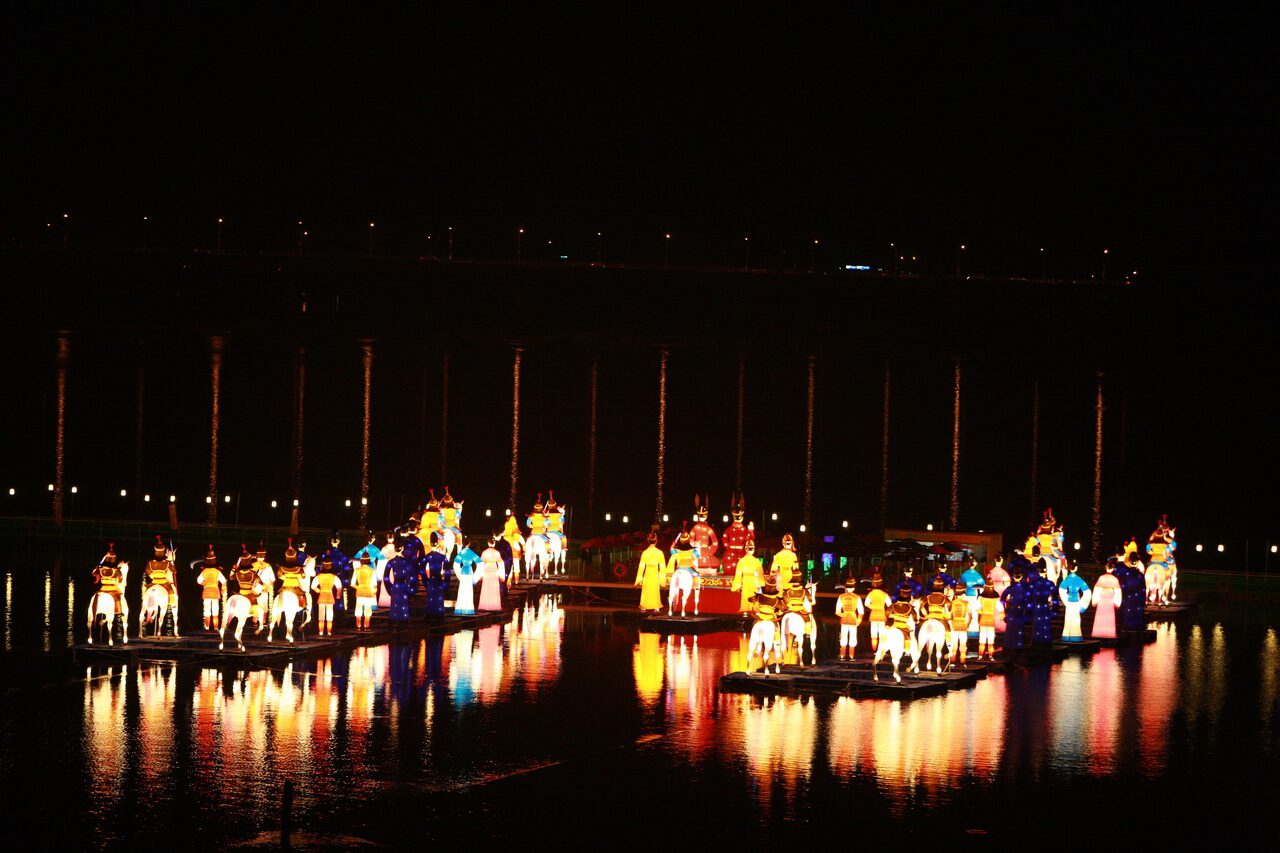
Glowing lanterns durig the Great Baekje World Festival © Kim Jiho, Korea Tourism Organization
The Baekje Culture Festival is undoubtedly one of the biggest and best festivals to attend in the Chungcheongnam-do region. Don’t miss it if you happen to be in Korea at this time.
Gongsanseong Media Art Festival | 공산성 미디어아트
Festival Dates: TBA for 2024, but September 9th – October 9th last year
Address: 280 Ungjin-ro, Gongju-si, Chungcheongnam-do | 충청남도 공주시 웅진로 280 (금성동)
The Gongsangseong Media Art Project sees the fortress walls used as massive canvasses for media art projections about the Baekje Kingdom.
I stumbled on this festival totally by accident last year, and feel lucky that we did. Aside from the huge media art show on the exterior of Gongsanseong Fortress, there’s also ton of gorgeous light installations and fun activities INSIDE the fortress too.
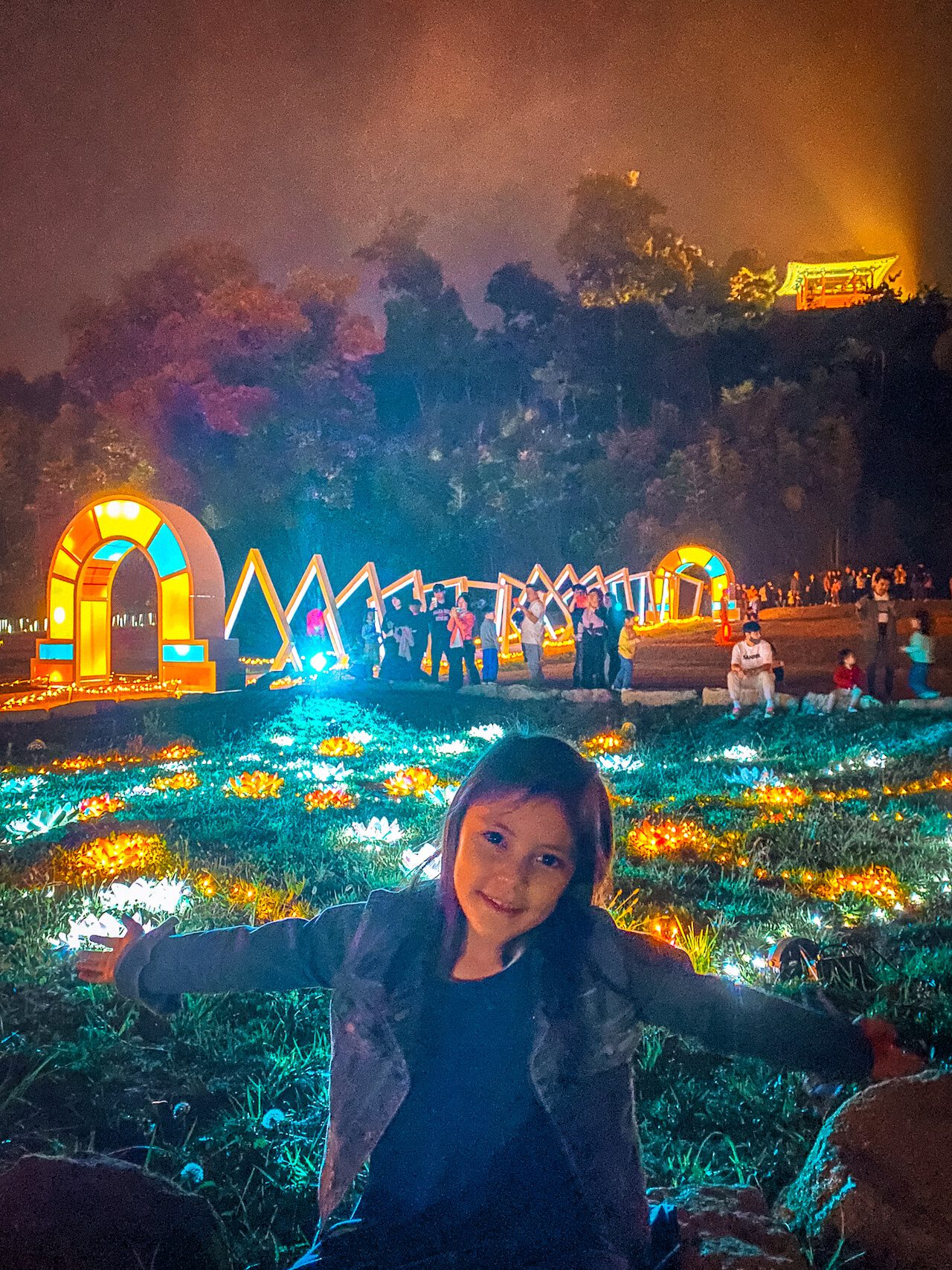
Gorgeous light art inside Gongsanseong Fortress.
The Gongsanseong Media Art Project is usually timed to overlap with the dates of the Baekje Culture Festival, so keep an eye out for that.
What to Eat in Gongju
Gongju-si in Korea isn’t one of the cities known for gastronomical experiences in Korea, but that doesn’t mean there aren’t delicious things to seek out. Here are a few recommended places.
Gomanaru Dolssambap | 고마나루돌쌈밥
Address: 5-9, Baekmigoeul-gil, Gongju-si, Chungcheongnam-do | 충청남도 공주시 백미고을길 5-9
Gomanaru is a dolssambap restaurant, located near Gongsanseong Fortress. Ssambap basically means “wrapped rice,” and you’ll be presented with a table full of dishes to make your own unique creation.
- Choose what you want from this spread © Kim Jiho, Korea Tourism Organization
- Make a ssam (wrap) with your choices © Kim Jiho, Korea Tourism Organization
The rice at Gomanaru comes in a heated stone bowl (the dol). After scooping out the rice, be sure to pour in some hot water to steam with the scorched rice (nurungji) stuck to the sides of the bowl.
You’ll end up with “sungnyung” – a kind of toasted rice soup / tea. It’s not to everyone’s taste, but it’s warm and comforting to most Koreans.
The Boyang Heuksam Ginseng Chicken Soup | 더보양 흑삼삼계탕
Address: 충남 공주시 백미고을길 9-10 | 9-10, Baekmigoeul-gil, Gongju-si, Chungcheongnam-do
The Boyang is located on the back streets across from Gongsanseong Fortress. Aside from handmade dumplings, there are basically 2 items on the menu: black gingseng galbitang, and black ginseng samgyetang. Both soups are healthy, hearty, and absolutely delicious.
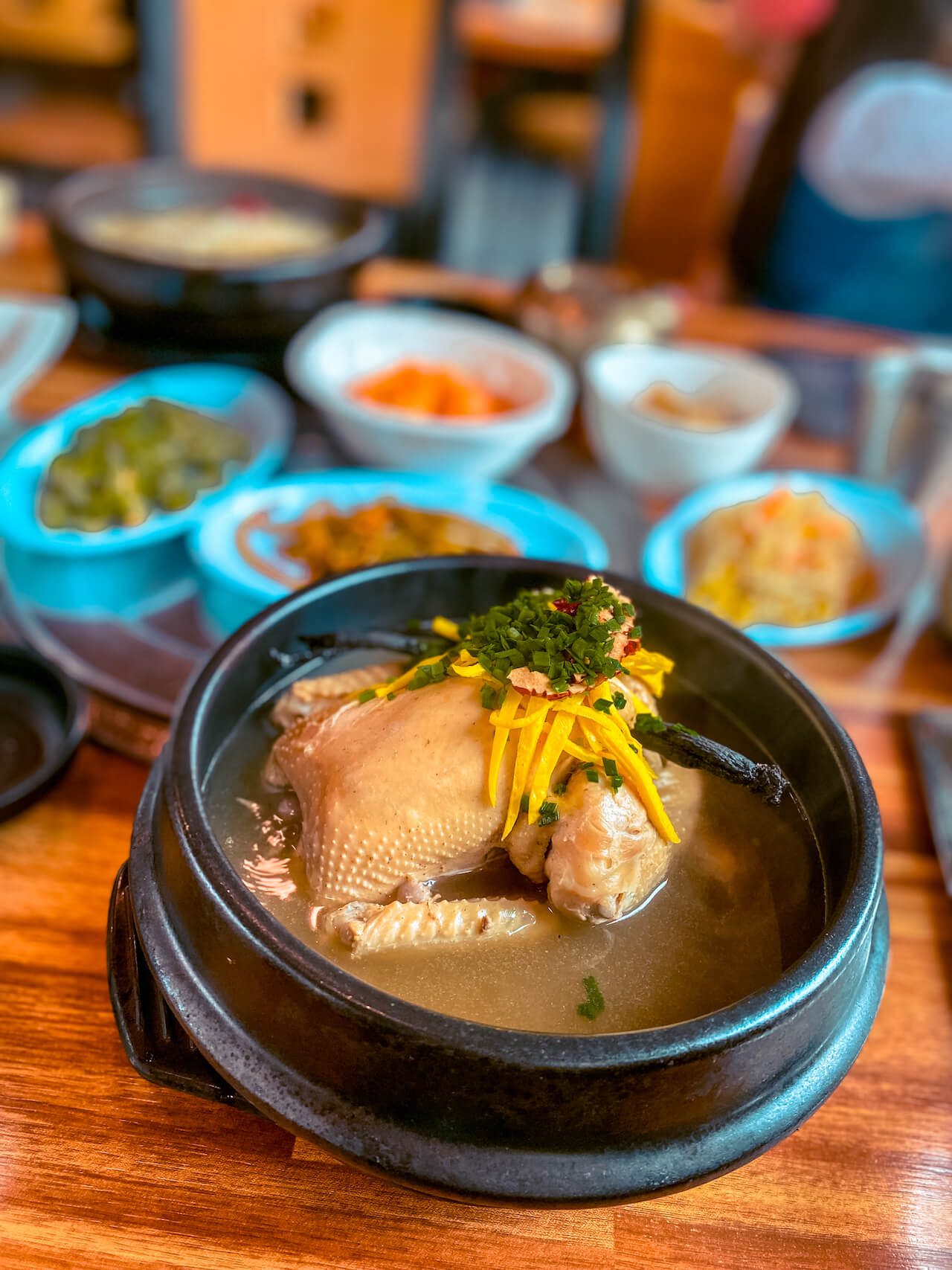
Heathy, tasty black ginseng samgyetang in Gonju-si.
If you don’t already know – samgyetang is a ginseng chicken soup, made with a whole young chicken that’s usually stuffed with jujubes, rice, garlic and ginseng. It’s one of the iyeol chiyeol (fight fire with fire) foods that’s popular to eat during Korean summer to combat the heat.
Tosiri Rice Bamppang | 토실이쌀밤빵
Address: 5-13, Baekmigoeul-gil, Gongju-si, Chungcheongnam-do | 충남 공주시 백미고을길 5-13
Gongju is known for chestnuts, so it’s no big surprise that there’s a cafe dedicated to all things chestnut. Tosiri is a hanok cafe, across the street from Gongsanseong Fortress, that also sells chestnut bread, along with its lattes and americanos.
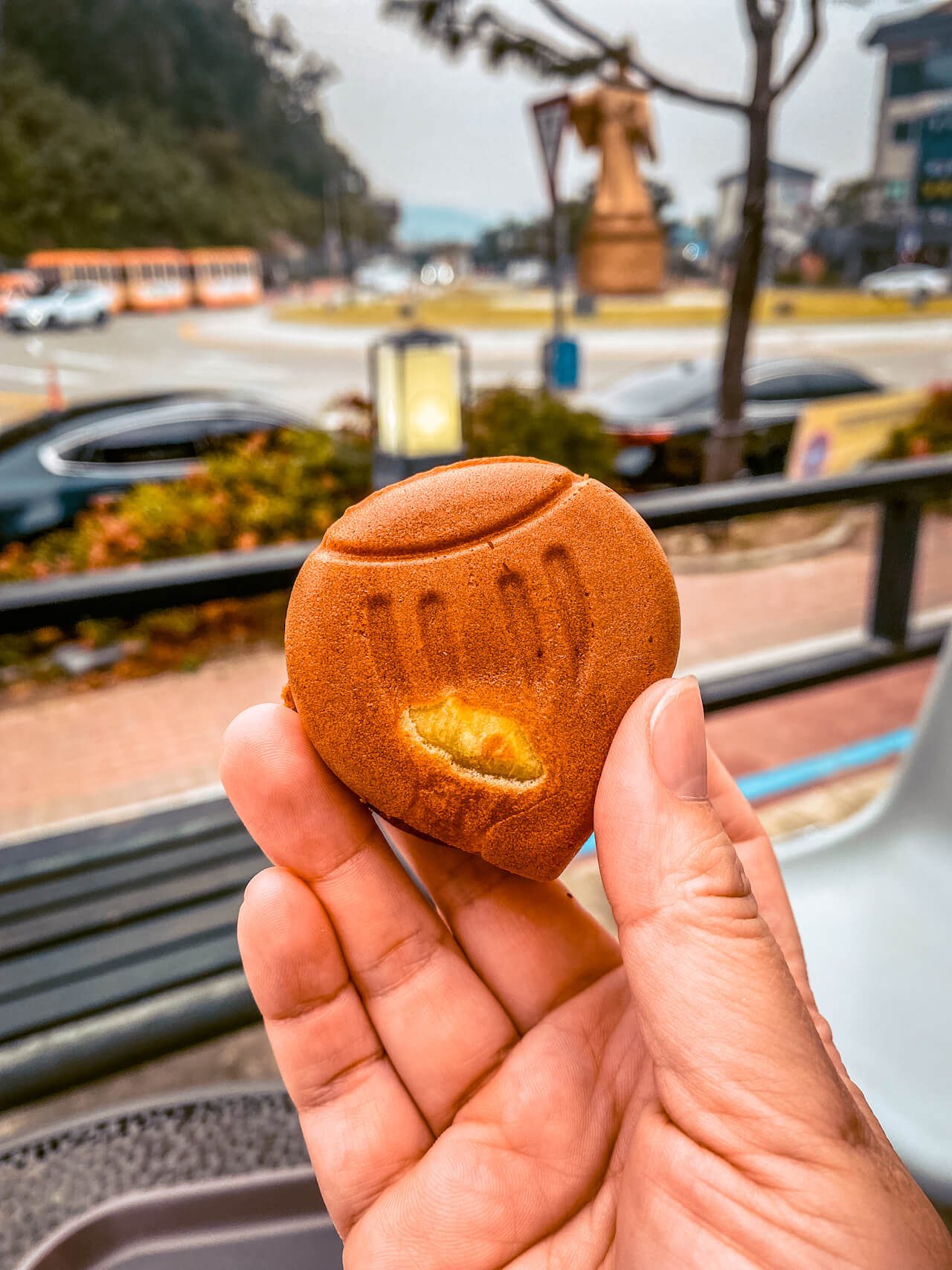
Chestnut shaped bread in Gongju!
The chestnut bread is as sweet, as it is cute!
Did this article help you? Writers (and moms especially) need caffeine!
Help support my small business with a cup of coffee.
Gongju, Korea: Essential Info and FAQs
Gongju is a worthwhile off-the-beaten path destination to explore in Korea. Will you go?






